2 Volumes
Culture: The Flavors of Philadelphia Life
Philadelphia began as a religious colony, a utopia if you will. But all religions were welcome, so Quakerism mainly persists in its effects on others, both locally and in America, in Art, clubs, and the way of life.
Sociology: Philadelphia and the Quaker Colonies
The early Philadelphia had many faces, its people were varied and interesting; its history turbulent and of lasting importance.
Nature Preservation
Nature preservation and nature destruction are different parts of an eternal process.
John Bartram's Garden
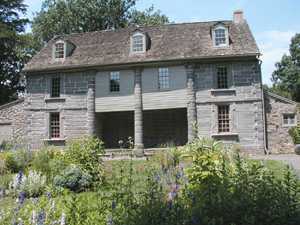
|
| Bartram Gardens |
It's worth a visit to Bartram's Gardens, if only for the astonishment of finding a very large farm and stone Quaker farmhouse within a few blocks of our largest medical center, a stone's throw from the biggest oil refinery on the upper East Coast. And located on the edge of a neighborhood that is, well, past its prime. The trees on the farm are centuries old, so walking around the grounds imparts the feeling of being hundreds of miles from civilization when in fact you are only a hundred yards away from streets that are very urban, indeed. When you turn in certain directions, an occasional skyscraper peeps over treetops, and down the meadows, at the farm's dock on the leafy-banked Schuylkill, you can see oil storage tanks across the river, just a long shot with a 2-iron away. Look upward, to see the upper half of shining towers of Center City.
The farm property as it now stands dates back to 1728, but the site marks the earliest beginnings of the city, nearly a hundred years earlier. The river curves around this hill then snake on down to Delaware through flatlands which were originally swamps ("wetlands", as they say). The hill is as far downriver into malaria territory as the Indians were willing to go, so the Dutch traders had to sail upriver and dock there in order to take thirty or forty thousand fur pelts back to Holland each year. One thing or another has been dumped on the swamps for three hundred years, and the oil companies found it a cheap place to buy enough land for their refineries, close to four or five railroads near Bartram's place, and with access to the high seas. Right now, most of the oil comes from Nigeria, emptying two or so supertankers a week. There has to be enough storage capacity to take care of delays caused by bad weather on the Atlantic, and there has to be access to railroads and highways to carry the finished product away. The rest of a refinery is just thousands of miles of metal pipes, gleaming in the sun.
Sun Oil is trying to be a good neighbor, turning more and more of the area over to nature preserve, as chemical engineers have learned how to work in a smaller space with fewer employees. The banks of the lower Schuylkill are now mostly grown to shrubs and trees, concealing from boat travelers the rather extensive dumps of old auto tires and similar refuse. It's a placid winding trip, increasingly coming to resemble what the Dutch traders once encountered. Especially in May, when the Palomino or Empress trees are in purple bloom. It seems the Chinese packed their porcelains in dried Palomino seed pods, and the discards have grown up to quite a nice display. Logan Square is filled with such trees, quite artfully pruned and maintained; just imagine several miles of the river lined with them, and you can see why the Tourist Bureau is excited about the potential. If you have been to San Antonio you know the potential of an urban river ride, which in this case might go all the way up to the Art Museum. Given enough public response, you can envision two or three-day barge rides from New Castle, Delaware to Pennsbury, with side trips up past Bartram's to the Waterworks. Right now, trips are comparatively limited by the tides, with a few trips a year down from Bartram's to the refineries, and a few more up to the river to the Art Museum. They use floating docks, and permanent docks will need to be built.
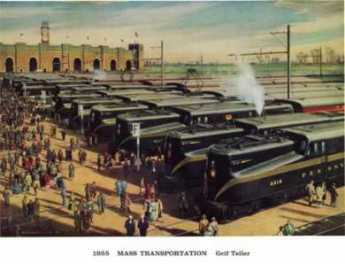
|
| Pennsylvania Railroad |
Originally, the crude oil came from upstate Pennsylvania, near Bradford, and was the main source of the dominance of the Pennsylvania Railroad. Baltimore and New York were also the beginnings of transcontinental railroads, but their freight cars came back empty. The upstate Pennsylvania oil gave the PRR a dominant edge by supplying cargo for two-way revenue.
When George Washington had to retreat from the Battle of Brandywine, the armies had to cross the wetlands, and the river, to get to Philadelphia. Washington got there first and burned the boats after his army got across. He knew, but the British probably did not fully realize, that the first place to ford the Schuylkill was at Norristown. When the British finally got that far, Washington was waiting for them, but a fall hurricane came along and soaked everybody's gunpowder before there could be much of a battle. Unfortunately, Mad Anthony Wayne was unprepared for a nighttime bayonet charge, and there was still quite a slaughter.
You can't wander around John Bartram's house and gardens without getting the impression of considerable wealth. Bartram was interested in botany, becoming the most eminent authority on plants of the Western hemisphere, a very close friend of Benjamin Franklin, and probably the main force behind the creation of the American Philosophical Society. But although Bartram was a hobbyist, he was a shrewd businessman, selling curiosity plants to Europeans, and commercially improved fruits and vegetables to local farmers. There are still some Bartrams around Philadelphia, with a strong Quaker air about them. Around 1850 the place was sold to a zillionaire railroad magnate named Eastwick, who fixed up the place in the high style he learned building the railroads of Russia for the Tsar. The mansion has been torn down, but the stone farmhouse, stone barn, stone sheds, stone outbuildings, stone everything -- endures, like many of the curiosity trees and bushes. Well worth a visit.
Morris Arboretum
 The former estate of John and Lydia Morris is run as a public arboretum, one of the finest in North America. 
|
Morris is the commonest Philadelphia name in the Social Register, derived largely from two unrelated Colonial families. In addition to their city mansions, both families had country estates. The country estate once belonging to the Revolutionary banker Robert Morris was Lemon Hill, just next to the Art Museum, where Fairmount Park begins. But way up at the far end of the Park, beyond Chestnut Hill, was Compton, the summer house of John and his sister Lydia Morris. This Morris family had made a fortune in iron and steel manufacture and were firmly Quaker. Both John Morris and his sister were interested in botany and had evidently decided to leave Compton to the Philadelphia Museum of Art as a public arboretum. John died first, leaving final decisions to Lydia. As the story is now related, Lydia had a heated discussion with Fiske Kimball, at the end of which the Art Museum deal was off. She turned to her neighbor Thomas Sovereign Gates for advice, and the arboretum is now spoken of as the Morris Arboretum of the University of Pennsylvania. It is also the official arboretum of the State of Pennsylvania. To be precise, the Morris Arboretum is a free-standing trust administered by the University, with the effect that five trustees provide legal assurance that the property will be managed in a way the Morrises would have wished. In Quaker parlance, Lydia possessed "steely meekness."
A public arboretum is sort of an outdoor museum of trees, bushes, and flowers, with an indirect consequence that many museum visitors take home ideas for their own gardens. Local commercial nurseries tend to learn here what is popular and what grows well in the region, so there emerges an informal collective vision of what is fashionable, scalable, and growable, with the many gardeners in the region interacting in a huge botanical conversation. The Morris Arboretum and two or three others like it go a step further. There are two regions of the world, Anatolia and China-Korea-Japan, with much the same latitude and climate as the East Coast of America. Expeditions have gone back and forth between these regions for a century, transporting novel and particularly hardy or disease-resistant specimens. An especially useful feature is that Japan and parts of Korea were never covered with glaciers, hence have many species found nowhere else in the temperate zone. Hybrids are developed among similar species found on different continents, and variants are found which particularly attract or repel the insects characteristic of each region. The Morris Arboretum is thus at the center of a worldwide mixture of horticulture and stylish outdoor fashion, affecting millions of home gardeners who may never have heard of the place.
Geckos: Academy of Natural Sciences brings Mini Dinosaurs

|
| Gecko |
FRIENDS who spent time in Vietnam have a lasting memory of lizards stuck to the ceiling, catching flies with their tongues. Those animals are named geckos, one of the oldest and probably most varied families of reptiles, but confined to the Southern hemisphere. Fossils have been found containing geckos from fifty million years ago, so they were here before the big dinosaurs were wiped out, when the Yucatan was probably struck by an asteroid.
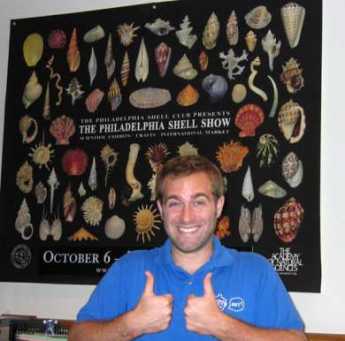
|
| Anthony Geneva |
There was a time when Africa, India, South America and Antarctica were united in one monstrously big continent, and the many varieties of gecko are scattered over the land masses which originally made that up. At least this is the way Anthony Geneva explains it to visitors to the Academy of Natural Sciences at 19th and Ben Franklin Parkway. There are no geckos to be found naturally in Philadelphia. Philadelphians hardly need reminding that the first dinosaur bones, ever, were discovered in Haddonfield NJ, and were soon taken to the Academy for permanent display. Ever since that time, the Academy's collection of dinosaurs has expanded, and are the things with the most impact on school-age visitors. The Academy is getting ready to celebrate its 200th anniversary in a few years, however, and contains much more than dinosaur bones, including extensive research facilities with world-famous scientists at work in them. In any event, the dinosaur image is a clear metaphor for the present display of little reptiles that look like dinosaurs, whatever the DNA trail may be. The main exhibition area is currently filled with dozens of glass display cases containing live geckos, and the little rascals are so good at camouflage that you have to hunt carefully for them before they suddenly seem to emerge from the shadows. There are white ones, black ones, bright green and bright orange ones, speckled in all sorts of weird patterns. They make sounds resembling bird songs, and the term gecko is a native word referring to such sounds. The Academy displays these gecko-noises for visitors who are invited to push twenty or so buttons. Geckos move, but suddenly, and probably for some predatory purpose. If you are really into geckos, you focus on their feet.

|
| Gecko |
The variety of toe and foot shape is almost infinite and seems more so if you have a magnifying lens. The foot pads terminate in different kinds of extremely fine hairs, and that's their big secret. Those hairs are so fine the molecules of the foot and the molecules of the wall or ceiling attract each other magnetically. Since no energy is expended in the adherence, the gecko can remain attached to a wall or ceiling indefinitely, even after the gecko dies. But, by raising the angle of contact to thirty degrees, the foot detaches, and the little rascals can scoot along very rapidly, upside down. At present, there is a great deal of commercial and maybe military interest in clarifying the secrets of this adhesion. To be industrially useful, the footpad size would have to scale up to much larger dimensions, but just imagine gluing together the vessel ruptures and aneurysms inside the brain as we now do in a cumbersome manner with chicken-wire stents, just one example that quickly occurs to a visitor. If these little fellows figured out how to make these reversible adhesives fifty million years ago, our scientists ought to be able to imitate them.
Drop around to visit the Academy. It's filled with amazing things like this.
Delaware Bay Before the White Man Came
Captain John Smith of Virginia, sometime friend of Pocahontas, wrote a letter to Captain Henry Hudson that he understood there was a big gap in the continent to the North of the Virginia Capes, and maybe this was the Northwest Passage to China. Hudson set out to look for it.

|
| Hudson |
Smith's misjudgment now seems like a credible story if you take the ferry from Lewes, Delaware to Cape May, New Jersey. You are out of sight of land for half an hour on that trip, and it's a hundred miles of blue salt water to Philadelphia if you decided to go in that direction. In fact, the bay widens out to double the width or more, just inside the capes, and you can see how an explorer in a little sailboat might believe there was clear sailing to the Indies if you went that way. But as a matter of fact, Hudson encountered so much "shoal" that he ran aground repeatedly trying to sail into the bay, and soon gave up. He encountered a swamp, not an ocean passage. The Hudson River, and later Hudson's Bay, seemed like better bets.
What Hudson had encountered was one of the largest gaps in the chain of Atlantic barrier islands, formed by the crumbling of the Allegheny Mountains into the sea, and then washed up as beach islands by the ocean currents. At various points, the low flat sandy islands became re-attached to the mainland as the intervening bay silted up, and that's why the islands of New Jersey and Delaware seem like part of the mainland. And that's what would have happened to the whole Delaware Bay if it hadn't been ditched and dredged, and wave action diverted with jetties. The swamp was a great place to breed insects, so fish were abundant, and that brought birds in vast numbers. Two stories illustrate.

|
| Horseshoe Crabs |
Once a year, a zillion ugly Horseshoe Crabs crawl out of the sea onto the Lewes beaches, and lay a million zillion eggs in the sand. Almost to the moment, a swarm of South American birds swoops out of the skies to eat the eggs. Those birds started flying months earlier from thousands of miles away, but their timing with regard to Delaware crab eggs is perfect, so this evolutionary semi-miracle must have been going on for many centuries.
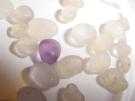
|
| Cape May |
Now, coming from the other direction, every hour each fall it is possible to see a hawk or two flies south to Cape May, then sort of disappearing in the woods. And then, at some unknown signal, tens of thousands of hawks rise from the bushes and travel together on the thirty-mile passage over the bay and then go on South. Cape May has lots of migratory birds and bird watchers, and it also has Cape May "diamonds", which are funny little stones washed up at the tip of Cape May Point.
In the spring, vast schools of successive species of fish migrate up the Delaware Bay to spawn in the reeds along the shoreline, but as each school encounters the point where the salt water turns fresh, they stop dead. They mill around at this point for several weeks adjusting to the change of water and then go on about their business. While they are there, it is possible for amateurs to catch amazing amounts of fish, if you know the best time, and if you know where the salinity changes. Since heavy or light rainfall can shift the salinity barrier fifty miles, you have to own your own boat if you want to enjoy this phenomenon, since the rental boats are all spoken for months in advance. Fishermen don't like to tell you about such things; patients of mine who literally owed me their lives have refused to say where I might find the fish this year.
Over on the New Jersey side of the bay, oysters like to grow, although something has just about wiped them out in recent decades. There is a town called Bivalve, which is worth a visit just to see the towering piles of oyster shells left over from last century. For miles around, the roads are actually paved with ground-up oyster shells. Up north around Salem, the shad used to run by the millions until the warm water emerging from the Salem (nuclear) power plant attracted them into the intake pipes and action was taken to abate the nuisance. The Salem Country Cub is one of the few places where planked shad can be obtained in season. The system is to split the fish open and nail it to a board, which is then placed in the big open fireplace to cook, and sizzle, and smell just wonderful good. On the other hand, if you want to buy shad in season (March-May) and cook it at home, the place to get it is in Bridgeton.
At the far northern end, at Trenton, the real Delaware River flows into the bay. The area has long since been dredged, but at one time the "falls" at Trenton were notable. Even today, if you travel upriver almost to Lambertville, you will see the river drop over several small ledges. Actually, rapids would probably be a better descriptive term, since Delaware picks up quite a strong current coming down from the Lehigh Valley. In seasons of heavy rainfall, the falls can be completely "drowned".
And down at Philadelphia where we live, the Schuylkill joined Delaware, forming the largest swamp of all at the river junction, a place once famous for its enormous swarms of swans. The Dutch discovered a high point of land at what is now called Gray's Ferry and made it into a trading place for beaver skins from the local Indians. There seems no reason to doubt the report that they took away thirty thousand beaver skins a year from this trading post, now the University of Pennsylvania.
An English sailing vessel was once blown to the East side of Delaware at what would now be Walnut Street in Philadelphia, and it was recorded in the ship's log that it was scraped by overhanging tree limbs. The high ground at that point seemed like a favorable place to situate a city because the water was deep enough for ocean vessels. They had stumbled on one of the relatively few places in the whole bay that was both defensible and navigable, where the game was abundant, and fishing was good. The rest is history.
River City

|
|||||||||||||||||||||||||||||||||||||||||||||||||||||||||||||||||||||||||||||||||||||||||||||||||||||||||||||||||||||||||||||||||||||||||||||||||||||||||||||||||||||||||||||||||||||||||
Dock Street
The Corinthos Disaster
Fire, huge fire. The Corinthos disaster of January 30, 1975, was the biggest fire in Philadelphia history, and one hopes the biggest forevermore. Its immensity has possibly lessened attention for some associated issues which are nevertheless quite important, too. Like the issue of punitive damages in a lawsuit, or the need to balance environmental damage with a national need for energy independence. And the changing ways that law firms charge their clients. We hope the relatives of the victims will not be offended if the tragedy is used to illustrate these other important issues. On that cold winter day, two big tanker ships were tied up alongside the opposite banks of the Delaware River at Marcus Hook. The Corinthos was a 754-foot tanker with a capacity of 400,000 barrels of crude oil, tied up on the Pennsylvania side at the British Petroleum dock with perhaps 300,000 barrels still in its tanks at the time of the disaster. At the same time, the 660-foot tanker Edgar M. Queen
with roughly 250,000 barrels of specialty chemicals in its hold, let go its moorings to the Monsanto Chemical dock directly across the river in New Jersey, intending to turn around and head upstream to discharge the rest of its cargo at the Mantua Creek Terminal near Paulsboro. Curiously, a tanker is more likely to explode when it is half empty because there is more opportunity for mixing oxygen with the combustible liquid sloshing around. A tug stood by to assist the turn, but the master of the Queeny felt there was ample room to make the turn under her own power. With no one paying particular attention to this routine maneuver, the Queeny seemed (to only casual observers) to head directly across the river, ramming straight into the side of the Corinthos. Actually, the Queeny had engaged in a number of backing and filling maneuvers, and the sailors aboard were appalled that it seemed to lack enough backing power to stop its headlong lunge at the Corinthos. There was an almost immediate explosion on the Corinthos, and luckily the Queeny broke free with only its bow badly damaged. Otherwise, the fire might have been twice as large as it proved to be with only the Corinthos burning. The explosion and fire killed twenty-five sailors and dockworkers, burned for days, devastated the neighborhood and occupied the efforts of three dozen fire companies. A graphic account of the fire and fire fighting was written by none other than Curt Weldon who was later to become Congressman from the district, but was then a volunteer fireman active in the Corinthos tragedy. There were surprising water shortages in this fire on the river because the falling tides would take the water's edge too far away from the suction devices for the fire hoses on the shore. The tide would also rise above a gash in the side of the burning ship, floating water in and then oil up to the point where it would flow out of the ship onto the surface of the river. Oil floated two miles upstream from the burning ship and ignited a U.S. Navy destroyer which was tied up at that point. Observers in airplanes estimated the oil spill was eventually fifty miles long. All of these factors played a role in the decision whether to try to put the fire out at the dock or let it burn out; experts continue to argue which would have been better. There were always dangers the burning ship would break loose and float in unexpected directions, that the oil slick would ignite for its full length, and that storage tanks on shore would be ignited. The initial explosion had blown huge pieces of iron half a mile away, and the ground near the ship was littered with charred, dismembered pieces of flesh from the victims. , Of course, there was a big lawsuit. When a ship is tied up at a dock it certainly feels aggrieved when another ship crosses a river and rams it. The time-honored principle of admiralty law holds that the owner of an offending ship is not liable for damages greater than the salvage value of its own hulk, which in this case might have been about $3 million. The underlying assumption is that the owner has no way of knowing what is going on thousands of miles away, no control over it, no power to respond in a useful way. Enter Richard Palmer, counsel for the Corinthos. Palmer was aware that the National Transportation Safety Board collects information about ship maintenance inspections in order to share useful information for the benefit of everyone. His inquiry revealed that the inspections of the Queeny for four years before the crash had repeatedly demonstrated that the stern engine had a damaged turbine, and was only able to drive the ship at 50% of its rated power. Why this turbine had not been repaired was now irrelevant; the owners of the ship did have relevant information and had failed to act in a timely safe fashion. The limitation of liability to the salvage value of the hulk now no longer applied if the negligence was judged relevant. The defendants, the owners of the Queeny, decided to settle. While the size of the settlement is a secret of the court, it is fair to guess that it approached the full value of the suit, which was $11 million. Mr. Palmer, by using his experience to surmise that maintenance records might be available at the Transportation Agency, and recognizing that the awareness of the owner might switch the basis for the compensation award from hulk value (of the defendant's ship) to the extent of the damage (to the plaintiff's ship), probably tripled the damage settlement. Reflections on the extraordinary benefit to the client from a comparatively short period of work by the lawyer leads to a discussion about the proper basis for lawyers fees. Senior lawyers feel that the computer has revolutionized lawyer billing practices, and not for the better. Because it is now possible to produce itemized billing which summarizes conversations of less than a minute in duration, services for the settlement of estates can be many pages long, mostly for rather routine business. Matrimonial lawyers are entitled to charge for hours of listening to inconsequential recriminations; lawyers can bill for hours of time spent reading documents into a recording machine, or sitting wordlessly at depositions. Since the time expended can now be flawlessly measured and recorded on computers, there is little room for a client to remonstrate about their fairness. Discomfort about this system underlies much sympathy for billing for contingent fees, where the lawyer is gambling all of his expenses and effort against a generous proportion of the award if he wins the case, nothing at all if he loses. This latter system, customary in slip and fall cases and justified as permitting the poor client to have proper representation, undoubtedly promotes questionable class action suits and often leads to accepting personal liability suits which should be rejected for lack of merit. The thinking underlying personal injury firms is widely said to be: most insurance companies will settle for modest awards in cases without merit because the defense costs would be no less than that amount, and occasionally a personal liability case gets lucky and extracts a huge award. Listen to one old-time lawyer describe how legal billing used to be. After the case was over, the lawyer and the client sat down to a discussion of what was involved in the legal work, and what it accomplished for the client. A winning case has more evident value than a losing one, provided the lawyer can effectively describe the professional skills that helped bring it about. The whole discussion is aimed at having both parties leave the discussion satisfied. To the extent that both parties actually are satisfied with the value of the services, the esteem and reputation of the legal profession are enhanced. And the lawyer is a happy and contented member of a grateful community. If he can occasionally claim a staggering fee for a brief but brilliant performance, as in the case of the explosive fire on the Corinthos -- well, more power to him. It does not take much familiarity with oil refineries to make you realize that cargoes of crude oil are a very dangerous business. We are accustomed to hearing jeers at those who protest, "Not in my backyard", and we deplore those who would jeopardize our national security to protect a few fish and trees in the neighborhood of potential oil spills. Since we do have to import oil and we do therefore have to jeopardize a few selected neighborhoods to accomplish this vital service, the opponents are sadly destined to lose their protests. But that doesn't mean their concerns are trivial. The shipping and refining of oil are dangerous. We just have to live with it and be ready to pay for its associated costs. Windmill Electricity
The Right Angle Club was recently edified at lunch about wind-power generated electricity, by Craig Poff of Iberdrola Renewables, the largest producer of renewable-source electricity in the world. Iberdrola is a Spanish firm, headquartered in Bilboa where they have Basques, near where the Spanish Armada once started its ill-fated journey to battle Sir Francis Drake. Furthermore, it's near where there are caves with wall paintings several thousand years old. Craig is pure American, however, with a background in real estate sales. That isn't as remote a connection as it may sound, because it takes several years and a lot of salesmanships to assemble the leases necessary to create a windmill farm. We've all seen photographs of these silvery towers, with what looks like aluminum propellers glinting in the sun. They are actually made out of fiberglass in much the same way boats are made, and quite often both are made in the Trenton region. So to speak, two hollow clamshells are held together with masking tape to form a propeller blade. Eventually, it revolves slowly, slowly in the wind, starting around 15 miles per hour, and getting turned off when the wind gets so fast it's dangerous. The blades modify their pitch at different speeds, and the entire contraption rotates to meet the wind. Sometimes one windmill will "steal" the wind from its neighbor, so the middle ones get turned down or turned off. There are local "met masts" to measure the wind and its direction and respond with appropriate directions via computers. There are also regional computer centers, and finally, electric power distribution is controlled by computers in Bilbao. Electricity can't be stored very well, so sometimes a perfectly good wind must be ignored when electricity isn't needed. Scientists are working on big batteries, and also on storing energy by pumping water uphill into storage reservoirs or compressing air into caves. Storing wasted electricity is a major issue, and high hopes are held out for innovation in batteries.
A typical tower is about 123 meters high, with a wingspan of about 300 feet; the towers are separated by roughly 1500 feet, but by much more when they are downwind. It's easy to see how negotiations with local farmers can be difficult, requiring months of public relations in a new community. Sometimes they encounter someone like Senator Ted Kennedy, who just plain dislikes how windmills look. Negotiations have to be conducted to obtain access roads to the wind farm, and access to the power transmission grid. Negotiations have to be conducted both before and after construction to satisfy game commissions who worry about the birds and the bats. As it works out, a farmer gets about $7000 a year to lease out his land, but windier areas are more prized, so jealous bargaining abounds. It's probably no wonder only 2% of electric power is presently generated this way, even though Pennsylvania law requires the power companies to reach 18% by 2020. Requires? What's the reasoning behind that? At present, the windmill nearest to Philadelphia is in Pottsville. It's nice this electricity gets generated by a source so clean, which also can't be shut off by the Iranians. But awkwardly it's expensive to make electricity this way, particularly if you include the subsidies it enjoys. Yes, yes, it's true that lots of things are receiving dubious subsidies, and some of them are competitors to wind power. But the unwillingness of wind power advocates to acknowledge the relative costs of their product suggests to any skeptic that relative costs must be extremely high, indeed. Yes, it's clean, but it's expensive and needs a subsidy. Industries that consume large amounts of power have been offered power purchase agreements that constitute a hedge against future cost volatility for many years in the future. That's both a hedge against rising costs and a promise of reliability; some businesses will pay for that. The competitive economics are that the initial cost of wind power is quite high, but future maintenance costs are quite low. More typically, most household consumers feel they have a right to know more precisely what the competitive prices really are, absent loss leaders, subsidies and hype. When we know that for sure, we consumers will decide whether a somewhat cleaner environment is worth the price. The investors in this technology must gamble they can persuade us that it is, and one can be fairly certain competitive energy producers will seek to persuade us that it isn't. What the farmers who lease their land think, also matters. But the farmers will mostly matter in the legislature voting on clean air mandates, where city dwellers tend to lose their influence. You can sort of see how the legislators think: the farmers know how much they have been offered for the land leases, but the city dwellers can only guess at how clean the environment will get, and how much the electric costs will rise. New Jersey Ponders a Rising Sea Level
A certain gentleman in a professional position to dominate conversations about rising sea levels, is afraid of being sued and requests his name be withheld from the following. Let's just call it hearsay, suitable only for conversational banter. If the icecap now sitting atop Greenland should melt, it can rather easily be calculated that sea level would rise to the point where the Delaware River would be 83 feet deep. The Army Corps of Engineers would then probably have more urgent matters to attend to, but at least they would no longer have to cope with deepening the channel to 40 feet. If the Antarctic ice cap should then melt on top of it, the sea level would rise an additional 220 feet, resulting in a Delaware River 300 feet deep. There might be some dry real estate on top of Blue Mountain, but not much else on the Atlantic seaboard would be dry, so there would likely be the additional problem of keeping other people from climbing up to sit in your perch. Perhaps the Hawks would bring you something to eat. A more immediate issue relates to the barrier islands. It is thought the crumbling of mountains into the sea accounts for the sandy beaches of the Atlantic and Gulf coasts; the more recent mountains along the West coast have not progressed to the point of piling up enough sand to start the process. The cycle of barrier islands is as follows. Barrier islands, if left undisturbed, will gradually migrate toward the land mass behind them, filling up the intervening bay, and eventually adding to the mainland. But that's not the end of the cycle, because the continuous wave and tidal action will generate a new barrier island further out to sea. When the new island reaches a critical equilibrium with the waves and storms, it begins the cycle of deterioration all over again. Presumably, the sandy lowlands of southern New Jersey, the Delmarva Peninsula, and most of Florida are the result of many cycles of barrier islands adding themselves to the mainland. Presumably, the process will run out of sand someday, but not soon enough to worry about. When affluent people build showplaces on the barrier islands, a great deal of concrete is laid on the island surface for roadways and parking lots, as well as jetties and other desperate efforts to prevent erosion from destroying the beaches, beachfront property, and real estate values. This process is much more active and rapid than most sunbathers seem to imagine. There are channel markers and monuments of the 18th century that are a mile or more out to sea in the 21st century. Almost a mile of beachfront has disappeared at Cape May and Cape Henlopen in Delaware. Lots of other real estate has been swallowed, but records of historical markers at the mouth of the bay have been more diligently maintained. The residents demand that sand be dredged and dumped on their beaches to keep even with the destructive forces at work. All of this ultimately useless resistance to Nature costs a great deal of money. Those who observe the contest between the protests of King Canute and the resistance of other New Jersey taxpayers to rising taxes estimate that around 2040 the cost of interrupting the barrier island cycle will become so burdensome that taxpayers will successfully put a stop to resisting natural beach erosion. The political uproar will surely be horrendous, so there is a good reason for oceanographers to avoid going public with these inconvenient truths. And all of this doomsday talk, by the way, ignores the issue of global warming, which will surely make it all the worse. Pirate Lair
Delaware takes a ninety-degree turn right at about the place where the Salem nuclear cooling towers are visible on the Jersey shore, and great quantities of silt have piled up in the river there, making marshes and swamps. There is a rumor that Captain Kidd tied up among these marshy islands, and much better evidence that Blackbeard the Pirate used the Delaware marshes as a hideout. Since a high-speed highway, with limited access, now rushes visitors to the slot machines of Dover and the beaches of Lewes, no one much notices that this area hasn't changed much from what it probably looked like three hundred years ago. But if you take the old road, Delaware Route 9, you wander through the backcountry and are only likely to meet duck hunters. At one point, with a lake to one side and the river on the other, a watchtower has been erected for bird watchers and the like. It's very beautiful there, and quiet. So one day I drove up, parked my car at the base of the tower, and climbed a hundred steps to the top. Blackbeard was not in evidence, but it was easy to see how he might feel pretty secluded in the coves and behind the trees. There were lots and lots of birds, interesting enough but mostly unidentifiable by me. Like most big-city lovers of the environment, I mostly classify birds as little brown jobs (LBJ) and big black buggers (BBB). And then a car drove up, with some chattering teenagers.
From a hundred feet up, it was hard to tell what they were saying, and it probably didn't matter much. Until suddenly one of the girls screeched out, "Oh look! There's a big snake under that man's car! " One of the boys in the car shouted out, "That's a copperhead snake! I've never seen one so big!" And so, they roared off into the distance, leaving the marshy paradise to me and the snake. What do I do now? I waited, hoping the snake would go away. But it started to get dark, and now it was even more unattractive to chase around with snakes. So, creeping to the bottom of the stairs, I made a dash for the car door, jumped in, and slammed it tight. As I drove away, I could not see any snake on the ground under the place where I had parked. To this day, I don't know if there really was a snake there or not. Nature Preservation
Although Philadelphia is proud of its history and its historical buildings, it would be my observation that Philadelphia is not as intense about the preservation of Nature as some other parts of the country appear to be. Philadelphians like nature all right, but it tends toward azaleas a little, and only infrequently do you meet someone in our town who could fairly be sneered at as a tree-hugger. In fact, I believe I sense it being implied that non-Philadelphians are so impassioned about minnows and spotted owls because they have no old houses to be worked up about. But perhaps I only read that into their unguarded remarks. It must be admitted that some efforts to preserve nature have had unintended consequences. In the Serengeti region of Africa, a grassland between Kenya and Tanzania, about two million animals migrate in great herds, following the equatorial rainfall. The zebra and gnu are the main herds, with lions and leopards lurking around the edge, and vultures in the trees and hyenas and baboons further out, waiting for something edible to stumble. Several dozen jeeps and land rovers carry the tourists around to see the fun. It's a Disneyworld for American tourists. It's a little disquieting to learn that the local government sends helicopters around to machine-gun the poachers, and thus it's a little disturbing to think that starving people are being shot for the benefit of the tourist trade, if not for the tourists personally. Perhaps it doesn't matter, because most of the locals will be dead from AIDS in ten years, but most of the tourists who hear these arguments rehearsed fall strangely silent.
And then, back in old Philadelphia again, a lady at an Athenaeum reception was telling her circle of friends about an eagle's nest that appeared on her country place, but don't tell anyone. The nest last year was as big as a Volkswagen, this year it's as big as a Subaru, but don't tell anybody about it. Well, why not? Her husband quickly intervened to relate that the laws protecting the bald eagle and its nests are so severe that people for several miles around such a nest are bound by terribly onerous restrictions and subject to strict penalties. So? Well, the people who have been annoyed by these unwelcome laws will sneak in and shoot the eagle, just to get rid of the whole nuisance. So, the laws intended to protect our symbolic national birds actually have the effect of provoking their slaughter. It's my view that these stories with an unspoken moral reflect discomfort with having people in one region of the country promote laws which mainly affect people in some other part of the country. We don't want people in Oregon to introduce legislation regulating the restoration of Society Hill buildings. So, we are not quick to support legislation regulating the drilling for oil in that remote mosquito-infested swamp called the Arctic Wildlife Preserve, when we hear that the local Alaskans are cool to the idea. It begins to sound like R versus D, so let's dance away from the topic. If there's some way to let Alaskans decide what's good for Alaska, maybe it's better. The Delaware valley had been settled by Europeans for sixty years before William Penn arrived. Roughly, fifteen years of the Dutch, followed by fifteen years of Swedes, fifteen years of Dutch again, fifteen years under the English Duke of York. There were over a thousand people living here who spoke Swedish. With a focus on what the environment was like and how the early settlers treated it, listen to a passage from The Making of Pennsylvania by Sidney George Fisher. The woods at that time were quite free from the underbrush and afforded a short nutritious form of grass. It was easy to ride on horseback anywhere among the trees. But the second growth, which came after cutting or burning the primeval forest, brought on the underbrush and destroyed the woodland pasturage. The Swedes never attempted to clear the land of trees. They took the country as they found it; occupied the meadows and open lands along the river, liked them, cut the grass, plowed and sowed, and made no attempt to penetrate the interior. But as soon as the Englishman came he attacked the forests with his ax, and that simple instrument with a rifle is the natural coat-of-arms in America for all of English blood. In nothing is the difference in nationality so distinctly shown. The Dutchman builds trading posts and lies in his ship offshore to collect the furs. The gentle Swede settles in the soft, rich meadowlands, and his cattle wax fat and his barns are full of hay. The Frenchman enters the forest, sympathizes with its inhabitants, and turns half savage to please them. All alike bow before the wilderness and accept it as a fact. But the Englishman destroys it. There is even something significant in the way his old charters gave the land straight across America from sea to sea. He grasped at the continent from the beginning, and but for him, the oak and the pine would have triumphed and the prairies still are in possession of the Indian and the buffalo. Nevertheless, the Swede seems to have lived a very happy and prosperous life on his meadows and marshes. He was surrounded by an abundance of game and fish and the products of his own thrifty agriculture, of which we can now scarcely conceive. The old accounts of game and birds along Delaware read like fairy tales. The first settlers saw the meadows covered with huge flocks of white cranes which rose in clouds when a boat approached the shore. The finest varieties of fish could be almost taken with the hand. Ducks and wild geese covered the water, and outrageous stories were told of the number that could be killed at a single shot. The wild swans, now driven far to the south and soon likely to become extinct, were abundant, floating on the water like drifted snow. Onshore the Indians brought in fat bucks every day, which they sold for a few pipes of tobacco or a measure or two of powder. Turkeys, grouse, and varieties of songbirds which will never be seen again were in the fields and woods. Wild pigeons often filled the air like bees, and there was a famous roosting-place for them in the southern part of Philadelphia, which is said to have given the Indian name, Moyamensing, to that part of the city. Native Habitat
Teddy Roosevelt's friend Gifford Pinchot is credited with starting the nature preservation movement. He became a member of the Governor's cabinet in Pennsylvania, so Pennsylvania has long been a leader in the formation of volunteer organizations to help the cause. Sometimes the best approach is to protect the environment, letting natural forces encourage the growth of butterflies and bears in a situation favorable to them. Sometimes the approach preferred has been to pass laws protecting threatened species, like the eagle or the snail darter. Sometimes education is the tool; the more people hear of these things, the more they will be enticed to assist local efforts. The direction that Derek Stedman of Chadds Ford has taken is to help organize the Habitat Resource Network of Southeast Pennsylvania.
The thought process here is indirect and gentle, but sophisticated; one might call it typically Quaker. Volunteers are urged to create a little natural habitat in their own backyards, planting and protecting plant life of the sort found in America before the European migration. If you wait, some insects which particularly favor the antique plants in your garden will make a re-appearance, and in time higher orders like birds that particularly favor those insects, will appear. The process of watching this evolution in your own backyard can be very gratifying. To stimulate such habitats, a process of conferring Natural Habitat certification has been created. In our region, there are over three thousand certified habitats. Of course, you have to know what you are doing. Provoking people to learn more about natural processes is the whole idea. For example, milkweed. That lowly weed is the source of the only food Monarch butterflies will eat, so if you want butterflies, you want milkweed. For some reason, perhaps this one, the Monarch is repugnant to birds, so Monarchs tend to flourish once you get them started. After which, of course, they have their strange annual migration to a particular mountain in Mexico. Perhaps milkweed has something to do with that.
If you plant trees and shrubs along the bank of a stream, the shade will cool the water. That attracts certain insects, which attract certain fish. If you want to fish, plant trees. And then we veer off into defending against enemies. The banks of the Schuylkill from Grey's Ferry to the Airport are lined with oriental Empress trees, with quite pretty purple blossoms in the Spring. These trees seem to date from the early 19th Century trade in porcelain (dishes of "China" ) on sailing vessels. The dishes were packed in the discarded husks of the fruit of the Empress tree, and after unpacking, floated down the Schuylkill until some of them sprouted and took root. Empress trees are certainly an improvement over the auto junkyards hidden behind them. On the other hand, Kudzu is an oriental plant that somehow got transported here, and loved what it found in our swamplands. Everywhere you look, from Louisiana to Maine, the shoreline grasslands are a sea of towering Kudzu, green in the spring, yellow in the fall. It may have been an interesting visitor at one time, nowadays it's a noxious weed. So far at least, no animals have developed a taste for Kudzu, and no one has figured out a commercial use for it. When an invasive plant of this sort gets introduced, native habitat and its dependent animal life quickly disappear. So, in this situation, nature preservation takes the form of destroying the invader.
But where is Charles Darwin in all this? The survival of the fittest would suggest that successful aggressors are generally fitter, so evolution favors the victor. Perhaps swamps are somehow better for being dominated by Kudzu, pollination might be enhanced by killer bees. At first, it might seem so, but if the climate or the environment is destined to be in constantly cycling flux, diversity of species is the characteristic most highly desired. For decades, biologists have puzzled over the surprising speed of adaptation to environmental change. Mutations and minor changes in species seem to be occurring constantly, and most of them are unsuccessful changes. But when ocean currents change, or global warming occurs, or even man-made changes in the environment alter the rules, we hope somewhere a favorable modification of some species has already occurred standing ready to take advantage of the changing environment. Total eradication of species variants, even by other species which are temporarily better adapted, is undesirable. In this view, the preservation of previously successful but now struggling species is a highly worthy project. The meek, so to speak, will someday have their turn, will someday inherit the earth. For a while.
And finally, there are variants of the human species to consider. To be completely satisfying, a commitment to preserving "native" species in the face of aggressive new invaders must apply to our own species. Surely, a devotion to preserving little plants and insects against the relentless flux of the environment does not support a doctrine of driving out Mexican and Chinese immigrants at the first sign of their appearance, like those aggressive Asian eels plaguing the St. Lawrence Seaway?. Here, the answer is yes, and no. For the most part, invasive species are aggressive mainly because they find themselves in an environment which contains no natural enemies. If that is the case, fitting the newcomers into a peaceful equilibrium is a matter of restraining their initial invasion long enough for balance to be restored through the inevitable appearance of natural enemies. So, if we apply our little nature lessons to social and economic issues related to foreign immigration, the goal becomes one of restraining an initial influx to a number which can be comfortably integrated with native tribes and clans. In the meantime, we enjoy the hybrid vigor which flourishes from exposure to new ideas and customs. In the medium time period, that is. For the long haul, if the immigrant tribes really do have -- not merely a numerical superiority -- a genetic superiority for this environment, perhaps we natives will just have to resign ourselves to retreating into caves. WWW.Philadelphia-Reflections.com/blog/1219.htm Furniture for the Horse Country
Low-end furniture for America is now mostly made in China, and seldom made of wood. Truly American cabinet making tends to be high-end, and high priced. That tendency goes to some sort of extreme around Unionville in Chester County, where a 25-year old company named Kinloch Woodworking holds pride of place. The owner, D. Douglas Mooberry, picked the name Kinloch at random from a map of Scotland, but his selection of southern Chester County was not an accident. The influence of nearby Winterthur has infused that whole region with an interest in fine furniture craftsmanship, and museums like the Chester County Museum and others throughout the nearby Pennsylvania Dutch country provide an ample source of authentic pieces to serve as examples. There's one other factor at work. As Doug Mooberry quickly noticed, people with money usually have lots of it. There really is a market for $28,000 tall case clocks, $18,000 highboys, and $12,000 tables -- if you can convince people in Chester County you are really good. Although this 12-person company repairs antique pieces, it does not make exact reproductions. It produces new pieces in the old style of the region, based on careful analysis and evaluation of museum pieces from earlier times. Kinloch once aspired to equal the quality of the early artisans, but now aspires to surpass them in quality of materials and workmanship. The more conventional stance of fine artists is to attempt to excel in today's current style, whatever that may be, probably "post-modern". Kinloch artists, however, choose to excel in the style of a long-past era, taking care not to claim the product is antique. Artisans grow up in cooperative clusters; there's a world-famous veneer company nearby and a pretty good hardware company, although the best craftsmen of furniture hardware are still found in England.
The characteristic style of Chester County furniture in the Eighteenth Century was a mixture of two neighboring cultures, Queen Anne, Chippendale, ball and claw Georgian style of Philadelphia; and the "line and berry" inlay style of the Pennsylvania Germans. If carefully executed, this hybrid style can be very pleasing, and you had better believe it requires painstaking craftsmanship. Others will have to explain the significance or symbolism of intersecting hemi-circles in the lines, and the inlaid wood hemispheres, the berries, at the end of the lines. But the technical difficulty of laying strips of 1/16 inch wood in curved grooves only a thousandth of an inch wider, or the matching of 3/8th-inch wood hemispheres into hemispheric holes gouged out of the main piece -- making the surfaces of the inlays perfectly smooth -- is immediately obvious to anyone who ever tried to whittle. Ultimately, however, true artistry lies in combining two unrelated styles without producing an aesthetic clash. By the way, you would be wise to wax such furniture once a year. The factory is on Buck and Doe Run Road, and here's another culture clash. At one time, Lammot du Pont cobbled a 9000-acre estate out of several little country villages. In 1945 it was sold to the Kleberg family of Texas, the owners of the King Ranch. Robert Kleberg was an admiring friend of Sam Rayburn but treated the oafish Lyndon Johnson as his personal political gofer. From 1945 to 1984 Buck and Doe was used as one of several remote feedlots for Texas Longhorns bred to Guernseys, the so-called Santa Gertrudis breed. Originally, Texas cattle were seasonally driven to Montana for fattening, then on to railheads for the stockyards. As farmers began to build fences interfering with the long drive over the prairies, it became cheaper to fatten cattle closer to the markets. So satellite feedlots like Buck and Doe Run were developed. You can pack more cattle in a rail car when they are younger and smaller, and advantage can be taken of price swings by suppliers who are close to the market. In this case, the markets were in Baltimore. Since the King Ranch is larger than the state of Rhode Island, such 9000-acre farms were pretty small operations in the view of the Texas Klebergs, an opinion they did not trouble to conceal from the irritated local gentry. The point was even driven home in high society circles by holding large parties at Buck and Doe Run, allowing guests to wander around the roads, unable to find the house of their host even though they had been on his property for most of an hour. In 1984 the Buck and Doe was sold to Art DeLeo, who is busily converting it into a nature conservancy. Burlington County, NJ
Burlington County used to be called Bridlington. It contains Burlington City, formerly the capital of West Jersey, which is how they styled the southern half of the colony, the part controlled by William Penn. In colonial times, the developed part of New Jersey was a strip along the Raritan River extending from Perth Amboy, the capital of East Jersey, to Burlington. To the north of the fertile Raritan strip, extended the hills and wilderness mountains; to the south extended the Pine Barrens loamy wilderness. The Raritan strip was predominantly Tory in sentiment, while the remaining 90% of the colony consisted of backwoods Dutch farmers to the north, and hard-scrabble "Pineys" to the south, except for the developments farmed by Quakers. The Quakers had ambiguous sentiments during the Revolution, leaving conflicts between pacifism and self-defense to individual discretion. The real fighting mostly went on between the Episcopalian Tories and the Scottish-Presbyterian rebels, both of which were sort of newcomer nuisances in the minds of the Quakers. The warfare was bitter, with the Tories determined to hang the rebels, and the rebels determined to evict or inflict genocide on the loyalists. Standing aside from such blood-letting of course inevitably led to a loss of Quaker political leadership. When East and West Jersey were consolidated by Queen Anne into New Jersey in 1702, the main reason was ungovernability, with animosities which endure to the present time in the submerged form. Benjamin Franklin's son William was appointed Governor through his father's nepotism, but when he turned into a rebel-hanging Tory, his father extended his bitterness about it into a hatred of all Tories. The later effect of this was felt at the Treaty of Paris, where Ben Franklin would not hear of leniency for loyalists, striking out any hint of reparations for their property losses. In a peculiar way, the factionalism resurfaced at the time of the Civil War, where the slave-owning Dutch in the North came into conflict with the slave-hating Quakers in the South. The problem would have been much worse if the Jersey slaveholders had been contiguous with the Confederacy, but it was still bad enough to perpetuate local sectionalism. A few decades ago, it was actually on the ballot that Southern Jersey wanted permission to secede. Under the circumstances, when James K. Wujcik wanted to work for progress in his native area, he avoided any ambition to enter State politics and concentrated his efforts on Burlington County. He is now a member of the Board of Chosen Freeholders of Burlington County, along with four other vigorous local citizens. Most notable among them is William Haines, the largest landholder by far in the area, whose family still controls the shares of the Quaker Proprietorship. Membership on the Burlington County Board of Freeholders is a part-time job, so Mr. Wujcik is also president of the Sovereign Bank. We are indebted to him for a fine talk to the Right Angle Club avoiding, with evident discomfort, many mentions of state politics or sociology.
Burlington is the only New Jersey county which stretches from the Delaware River to the Atlantic Ocean, including the Pine Barrens occupying 80% of the land mass in the center; fishing and resorts dominate near the ocean and former industrial areas along the river. Much of the area has been converted to agriculture for the Garden State, but about 10% is included in a National Preserve. The population has doubled in the past fifty years, so urbanization is replacing agriculture, which had earlier displaced wilderness. The county includes Fort Dix and Maguire Air Force Base, strenuously promoted for decades by now-retired Congressman James Saxton. Somewhere in the past few decades, Burlington became quite activist. Although many tend to think of real estate planning as urban planning, this largely rural county went in for planning in a big way, deciding what it was and what it wanted to be. Generally speaking, its decision was to replace urban sprawl with cluster promotion. The farmers didn't like an invasion by McMansions or industries, while the towns lost their vigor through tax avoidance behavior of the commuter residents. Overall, the decision was to push urban development along the river in clusters surrounding the declining river towns, while pushing exurban development closer to logical commuting centers, leaving the open spaces to farmers. Incentives were preferred to compulsion, with a determination never to use eminent domain except for matters of public safety. To implement these goals, two referenda were passed with 70% majorities to create special taxes for a development fund, which bought the development rights from the farmers and -- with political magic -- re-clustered them around the river towns. The farmers loved it, the environmentalists loved it, and the towns began to revive. The success of this effort rested on the realization that exurbanites and farmers didn't really want to live near each other, and only did so because developers were looking for cheap land. Many other rural counties near cities -- Chester and Bucks Counties in Pennsylvania, for example -- need to learn this lesson about how to stop local political warfare. Corporation executives don't want to live next to pig farms, but pig farmers are quite right that they were living there, first. When this friction seeps into the local school system, class warfare can get pretty ugly.
In Burlington County, they thought big. The central project was to push through the legislature a billion-dollar project to restore the Riverline light rail to the river towns, along the tracks of the once pre-eminent Camden and Amboy Rail Road. It was an unexpected success. During the first six months of operation, ridership achieved a level twice as large as was projected as a ten-year goal. Along this strip of the Route 206 corridor, the old Roebling Steel Works are becoming the Roebling Superfund Site, now trying to attract industrial developers. The Haines Industrial Site originally envisioned as a food distribution center was sold to private developers who have created 5000 jobs in the area. Commerce Park beside the Burlington Bristol Bridge is coming along, as are the Shoppes of Riverton and Old York Village in Chesterfield Township. As Waste Management cleans up the site of the old Morrisville Steel plant across the Delaware River, a moderate-sized development project is becoming an interstate regional one. No doubt there will be bumps in these roads; the decline of real estate prices nationally is a threat on the horizon, because it provokes a flight of mortgage credit. It works the other way, too, as banks decide to deleverage by reducing outstanding loans; this is the way downward spirals reinforce themselves. And anyone who knows anything about all state legislatures will be skeptical about political cooperation in a state as tumultuous as New Jersey. The Pennsylvania Railroad destroyed the promise of this state once; some other local interest could do it again. Nevertheless, right now Burlington County looks like a real winner, primarily because of effective leadership. Galapagos As an Environmental Laboratory
The Galapagos islands are on the equator, so the sun comes up at 6 AM and sets at 6PM, every day of the year. There are storms and changes in the currents, but this place comes as close as anywhere to being a constant-weather environment, useful for observing more complex places by comparison. That's part of the scientific method -- limit the variability under study. Jack Nixon just took an extended vacation there, and told the Right Angle Club about it, with slides.
Charles Darwin, the guides relate, didn't spend much time there, and investigated very little, possibly because he suffered from incapacitating migraine all his life. He took home a collection of 13 dead finches, which after the study were from different species with subtle differences, and led Darwin to develop his theory and write his book about the origin of species. Although some people will never forgive him for upsetting the conventional view of things, it may help to know that he was a disciple of the Scottish philosopher Hume. Hume was an important factor in the American Revolution, with particular influence on Princeton and hence Scotch Irish settlers in America. Hume taught that philosophy and religion are best advanced by demanding proof that anything in nature has a purpose, because most things don't. There's a difference between having a purpose and having a utility. To Darwin, the small differences between species must have some utility to endure, and those with most utility survived better than others. The Galapagos are volcanic peaks sticking up out of the Pacific Ocean about six hundred miles from Ecuador, to whom they now belong. They have experienced a number of small eruptions, even in the past twenty years. When the bare rock cools, birds rest on it, deposit what is delicately called guano, start vegetation, allow migrant fish and animals to survive. The islands, geologically speaking, are comparatively young, started fresh and new, and have the world's most constant climate. Many of the animal species are unique to the place, and traces of how they got to be what they now are like, still persist.
Along came two waves of predatory human beings. The pirates and whalers in the first wave dumped the big tortoises into the hold of their ships as fresh meat, more or less preserved. The great big dodo birds had no wings, so they were easy to catch, delicious to fry; and like the tortoises, were comparatively easy to carry along as shipboard supplies. The dodo is extinct, the tortoises almost so. However, most tourists quickly observe that tortoises spend most of their waking hours making love, so perhaps their survival can be traced to that. The second wave of human predators were the local South American fishermen, who brought along goats and rats to devastate the fragile environment. Ecuador prizes its tourist revenue, so it has made a nearly-successful effort to eradicate goats and rats. Furthermore, immigrants are strongly discouraged; prove you have to be here or get out. Even Bill Gates had trouble getting permission to dock his yacht. This is a place to see lots of funny birds. Blue-footed boobies, frigate birds, flamingos, cormorants, pilot whales, tropical penguins, porpoises, and albatross. The albatross keeps flying all the time, and only lands in order to mate. There's some sort of recurring theme, here. www.Philadelphia-Reflections.com/blog/1419.htm Vanishing Honey Bees
At the Wagner Free Institute, Professor May Berenbaum of the University of Illinois described a mystery disaster which suddenly cut the honey bee population in half during 2008. The nation's bee experts convened at emergency meetings and shared available information to try to figure out what happened. While the matter is not entirely clear, it appears that whole colonies of bees declined because the forager type of worker bee selectively disappeared. No bodies were found in the hives, and the other components of bee colonies were apparently unaffected. Foraging is a stage in the life history of worker bees which precedes their becoming honey and honeycomb workers within the hive, so a disaster for younger worker bees rapidly diminishes the older population of hive workers. Worker bees are sterile females; the fertile queens and drones are apparently unaffected. Speculation as to what has happened to American worker bees has centered on some new pesticides (neonicotinoids) and an Israeli parasite, both of which were new to the scene in the past couple of years.
Most people have little appreciation of the seriousness of this sudden problem. The price of honey can of course be expected to soar, but honey production is now only a small part of the modern bee industry. Three quarters of the revenue of beekeepers is derived from artificial pollination of flowering food plants, usually by trucking hundreds of hives from one region to another, as various food plants come into blossom. In turn, many crops are highly dependent on these bees to supplement wind pollination. The almond crop, the avacado crop, and sesame seeds are all highly dependent on honey bee pollination. The economic effects of a permanent decline in honey bees could have a serious economic effect. Professor Berenbaum is a Philadelphia girl, having been born in Levittown and educated in the region. She's a charming lady, starting off the lecture by commenting on the old birds and bees tradition. In her view, American children already know more about human sexual behavior than they know about bees. As a side note, the "Father of Modern Beekeeping" was theReverend Lorenzo Langstroth, also born in Philadelphia. While continuing his active ministry, Langstroth learned that bees would react with comb formation to crevices in the hive according to the width of the crevice. From this, he developed the now-standard rectangular hive with movable partitions, confining the queen bee to the bottom section by laying a screen above it with openings large enough to permit the worker bees to move through, but too small for the queen. Since the moveable partitions could be removed without shaking the whole hive and agitating the bees, beekeeping without hive destruction became practical. An additional feature was that the upper sections contained honey without bee larvae, and could be removed as filled, without reducing the population of bees in the hive. Langstroth's introduction of smoke blown into the hive had the effect of quieting the insects still further. Langstroth in 1848 published an instruction manual for beekeeping which is still in wide use because there was thereafter very little room for further beekeeping innovation. For many decades, honey became the main sweetener in American households. Unfortunately, the present mysterious loss of worker bees has pushed the price of a small jar to more than $40, steadily rising. One hopes the cause and cure of this malady will soon be found. In the spirit of helpfulness, the following suggestions are offered: disappearance of bees without dead bodies could be explained by insecticide toxicity somewhat better than by disease, because many diseased bees could be expected to find their way back to the hive, while poisoned ones could be killed quickly at some distance from the hive and never make it back. And one further thought is that failure of the bees to be born would explain vanished bees without corpses just as well as distant insecticides would. And the decline of feral bee populations starting in 1945 brings up a possible association with atom bomb tests, just as was seen in the sudden change in the world-wide pattern of human thyroid cancers. Just a suggestion. Sanctuaria MariposaWhen they leave us, all the shad go to the Bay of Fundy. When Monarch butterflies leave us, they head for a thousand-acre spot in the mountains of Mexico, every single one. The butterfly performance is more remarkable since a butterfly can't make it from Philadelphia to Mexico City in one lifetime. The caterpillar that hatches in Pennsylvania knows where to go and somehow tells his grandchildren how to get there. Coming back North is somewhat easier; successive generations of butterflies follow the scent of milkweed plants, which is all they will eat. This remarkable information was provided to us by the lifetime efforts of Professor Fred Urquhart of Toronto, with the volunteer help of the Girl Scouts. They tagged the insects, and other Girl Scouts reported back to headquarters whenever they found a tag or a tagged butterfly computer did the rest, and you better remember to thank them when they next offer to sell you some cookies.
Your reporter found this information irresistible, and while on a trip to Mexico hired a car and driver to go look for the Sanctuary of the Butterflies. The first tip was that drivers were remarkably reluctant to go. Although every single Monarch butterfly in Eastern North America heads for an inactive volcano that is only forty miles West of Mexico City the second largest city in the world, the trip was said to be too far to go. The roads, they are bad, the car is old, the way it is not well marked, and several other things as well. Mexico being what it is, this implausible resistance was first viewed as a way to extract a higher fee for going there, but in fact, there was a genuine worry about banditos. What is more, the roads they were in fact bad, and the car was definitely old. Admittedly, that did not match up with driving one-handed at break-neck speed.
When we reached a place where even Roberto could not drive the car further, we transferred to the back of a cattle truck, driven by Pedro, who also waved a cigarette with his free hand while we lurched and rattled up the mountain. At least he had one hand on the steering wheel, while we in the back of the truck had to clutch the wooden railing. Roberto had climbed into the back of the truck; he had decided he wanted to see these butterflies, too. It was hot when we started, so we wore T-shirts. But by the time the truck lurched to its final stop next to the souvenir shop, it was plenty cold. Butterflies seem to like it cold. What now? Now, you walk. At fifteen (?) thousand feet, your feet feel glued to the rocks you are climbing, but the trees of the sanctuary are within sight. And it is well worth the climb to come to the six hundred acres on top of a mountain, where every Monarch butterfly on the continent is either present or trying to get there. Butterflies from Texas, butterflies from Winnipeg, and somewhere in that mass were butterflies from Philadelphia. The butterflies were three feet deep on the ground, and hanging in huge balls from the limbs of trees. They don't make much noise, possibly being too busy looking for the ideal mate from the personals columns. The local guide said the really remarkable sight is on a certain day in the spring, when they all take off at once, heading for home. The sad news, unfortunately, is that the local Mexicans are cutting down the trees in the Sanctuary for the wood. We may soon see whether the butterflies go to some other hilltop, or whether we have seen the last of them. Draining Suburbia
Philadelphia's triangle of land between two large rivers once was laced with streams, brooks, and creeks. These were great places to catch fish, especially trout, and they had what poets call mossy banks. Nowadays, these streams are enclosed in culverts or their exposed banks are sharp cliffs of clay. Few people have heard of Indian Brook, which was once the brook that ran through town but is now the brook underneath Overbrook. The Conservancy has given thoughtful consideration to the consequences of building hard surfaces on top of what was once spongy soil. The streets, the roofs, the driveways of progress, of development, cause immediate runoff of water after a rainstorm instead of allowing seepage into the soil and gravel of the wilderness. The rain of a storm quickly surges into the storm sewers, and surges into the neighboring creeks, scouring the banks in a flood surge. The grass slopes cannot withstand such a housing, leading to sharp clay banks, which become undermined by later storms, toppling trees. The clay material from the banks makes the streams muddy, and the deposits of clay suffocate the insect larvae and fish eggs on the stream bottom. It's perhaps true that there are fewer mosquitoes, but there are no fish. The matter is compounded by the heating of the water as it drains over large sunlit surfaces like shopping mall parking lots, and the different water temperature in the streams changes the insect and fish content, too. It's almost hopeless to do anything useful in the downtown city areas, where the former streams are not only enclosed in pipes but run underneath skyscrapers. There may even be too much disruption involved to contemplate doing anything useful in towns which allowed storm sewage and sanitary sewage to flow in the same pipes. But it would be a comparatively simple thing to divert rainwater into gravel driveways or out over lawn areas since the goal is to slow its flow into the streams rather than dispose of it. Local ordinances could require such forethought for new construction, and perhaps make construction permits conditional on it. Many suburban homeowners would probably follow suit voluntarily, and gradually the situation might come under control with education and minor pain. There are other approaches that would get results quicker. In present China, "infrastructure" is upgraded much more directly. One recent visitor was discussing the problem of construction in an area where there was a Chinese town. He was told not to worry about it. The next time he visited the area, that town would be gone. ShadNowadays, we have fresh fruit and vegetables all year Shadround. When produce isn't in season locally, we get it from Florida and California. When even those places are out of season, we bring it in from Chile. But the supermarket and its attendant supply chains are recent phenomena. Before the two World Wars, our food was pretty drab and monotonous during the winter. The first sign of the culinary joys of spring was shad.
Everybody loved, which everybody ate in its various forms. Shad was cheap because it was abundant; indeed, it seems difficult for the modern fisherman to imagine the huge quantities of fish that came up the rivers in early March. There was even a special term for fish weighing less than three pounds; at the fish market, such fish were thrown in, free. The term "Bushwacker" referred to the practice of beating the fish in the water to catch them. There once was a time when everybody knew how to use a shad dart, everyone could filet the bones, everyone had fried shad roe for breakfast. Spring, it was acumen in. Unfortunately, the diversion of fresh water from upper Delaware to New York City, the dumping of waste from the oil refineries near Marcus Hook, and heaven know what other pollution, wiped out the annual shad run. Once a river's shad run is depleted, the main obstacle to getting it revived is the striped bass, who feast on the fingerlings coming back downriver from the spawning areas. You can still catch a few shad at the place where Amtrak crosses the Susquehanna, and a few hardy pioneer fish are starting to make it all the way to Lambertville. But the bulk of shad in Philadelphia markets now comes from North Carolina, and you better be alert to your timing or even they will be all gone before you've had any. There once was a time when a diner could be identified as a boorish stranger picking gingerly at the strong-tasting fish, or messing around dubiously with the unfamiliar roe served on toast. Nowadays, even lifelong Philadelphians will occasionally behave like that. You put lemon juice on the roe, dummy. And you filet the fish. The bones of a shad are complex, going both forward and back within the flesh, so you have to be experienced to take a very sharp knife, twist, and turn, duck your shoulders and flip the fish, to produce boneless" shad0. If you don't know how to do that, you may have to bake the fish for hours to melt the bones and make it edible, but tasteless. Such products can be rescued by stuffing them with bread crumbs and spices. When things reach the point where no butcher knows how to produce boneless shad, our culture is on the edge of extinction. The big center for wholesale boned shad is Dill's in Bridgeton, NJ. There is, right now, only one place where you can obtain planked shad. That's the Salem Country Club (if you look respectable they let nonmembers in) out at the point on the Jersey side where Delaware takes a big bend before it flows down to the sea. A shad is planked by splitting it open and nailing it to a board, which is then placed before an open fire in the fireplace. Snap, crackle and wow. Maybe the conservationists can get these fish back for us. The Eagles will certainly like that; had used to be what mainly sustained the American bird, and the depletion of the shad is part of the near-extinction of eagles. And maybe we can swallow our pride and teach the West Coast how to treat shad with respect. Shad was always an East-coast, Atlantic fish, and there is hardly a river left which has much shad. But someone transported some shad to the Sacramento, California area a century ago -- and they have flourished. Where the fish ladders of the Columbia River used to teem with salmon, nowadays they teem with shad. California likes to think it invents everything in America. Brace yourself for being told they invented shad. Gunk, 27 Million Tons of It
When Henry Hudson reached the mouth of Delaware Bay in 1609, the river was so full of snags he simply went up to what is now the Hudson River in New York rather than try to wiggle his little sailboat up Delaware. By 1900, there had been enough dredging and removal of islands that the channel was 17 feet deep all of the ninety miles up to Philadelphia. One of the consequences was that the new river edge was down at Delaware (Columbus) Avenue, rather than up at Front Street. When you make it deeper, the width of a shallow river often narrows. Now, the proposal is to deepen the channel to 42 feet, a number mandated by the present size of cargo container ships. Another limiting factor is the construction of the bridges, so the Port of Philadelphia is moving South of the Walt Whitman bridge. That's potentially of great value to the longshoremen who live in that region, although whether it will really bring prosperity is up to them, depending on whether they restrain their aggressive wage and work-rule proposals. There are serious students of the Philadelphia economy who maintain that the economic decline of Philadelphia is more traceable to the intransigence of the longshore unions than to any other factor. Since that comment is specifically made in comparison with the railroad brotherhoods, it is a dramatic accusation indeed. If you deepen the channel to 42 feet, 800 feet wide (1300 feet at bends in the river), you can be calculated to bring up 27 million tons of sludge. You have to dump that stuff somewhere else, and the current plan is for Philadelphia to build a retaining wall out into the river next to the Packer Avenue terminal area, and dump Philadelphia's share of the stuff behind it. In time, the water will drain out of the gunk, and quite a few acres of dry land would make its appearance. Some engineers question whether the force of the river would permit this. Environmentalists have objections to this project relating to stirring up pollutants lying dormant on the river floor, but without likely effect on the tin ears of those who are presently congratulating themselves on obtaining Federal money to accomplish this "big dig". The really serious obstructions are coming from the State of New Jersey, which would acquire 9 million tons of gunk as their fair share. Right now, New Jersey is raising taxes and cutting state spending because of a budget deficit, so they are not anxious to take on another big project, particularly one whose benefits will have to be shared with Pennsylvania. Pennsylvania was momentarily sympathetic with this problem until it was learned that New Jersey is actively promoting a FIFTY-foot channel in the Hudson River. Immediately it becomes obvious that there is not enough money for two projects, and there are more New Jersey voters up near the port of New York than down around the Port of Philadelphia. Both New Jersey and Pennsylvania have Democrat governors, while New York has a Republican one. Ordinarily, this would be a decisive point, but the preponderant location of voters up in North Jersey seems to trump that. Keep watching the Saturday papers, on the editorial page down below the fold, the place newspapers ordinarily reserve for retractions, apologies, and local political truths. What's going on here is attempted exploitation of geographical advantages. Philadelphia is at one of three navigable openings in the Atlantic coast barrier islands adjoining the New York-Washington megalopolis, or five openings if you call it a Boston-Richmond megopolis. Obviously, a seaway opening in the middle is superior to one at the ends, so it really comes down to a New York and Philadelphia competition, with Baltimore a poor third because European ships have to go down to Norfolk and then come come back up the Chesapeake, like Lord Admiral Howe in 1777. There's a huge amount of rail and truck traffic North and South, so crossing the T with ocean traffic arriving in the middle could make quite an economic center. Passenger rail traffic from Philadelphia to Pittsburgh and beyond is pretty anemic, but freight traffic is healthy and could be more so with cargo supplied by container ships. This is the dream, New York is the enemy, New Jersey is the villain, and the longshoremen are the main beneficiary. It is even possible to imagine eighty dollars per hundred in wages for Workman's compensation, but that would be cynical. Because of the New Jersey problem, proposals have been made to fill up abandoned coal mines with dredging sludge and let the water seep out wherever it, please. Somehow, this isn't thought to be practical, and other suggestions seem to be very welcome, a rather unusual circumstance in itself. Let's ask ourselves whether we want to return Philadelphia to its old industrial mightiness, or whether we want to encourage the development of a service economy, computers and all that. One way to measure success in the container cargo race is to count the unloading cranes. Philadelphia has about five of them, and most of the time they are sticking straight up, unused. There are many times that many in Seattle, and in Yokohama, there are over a hundred. The port of Kobe has far more, too many to count as you go past on the bullet train. However, there's a secret truth about container ships. When they get to Seattle, there is no cargo to fill them with for a return voyage, and in fact, the empty container pile-up is a rather serious problem. Bill Gates is shipping lots of software to Japan, but it doesn't fill cargo containers, and the economy of the region is going to have high transportation costs until someone figures out a bulk cargo product to ship from Seattle. This is exactly the situation of a century ago when the New York Central, the Baltimore and Ohio, and the Pennsylvania RR were battling it out for transcontinental supremacy. The Pennsy won that battle because oil was discovered in Bradford Pennsylvania, and refineries were built on the Schuylkill to process the oil. The Pennsy had thus found a round-trip cargo for filling its empty East-bound freight cars, and it beat out the other two railroads which didn't. Cheaper freight rates became possible, and therefore other industries prospered in the region. Right here is a topic which somebody at the Wharton School had better start talking about. No matter how much software and other service industry prosperity a city region may support, it has to find a way to supply bulk cargo to all those container ships that are bringing in the BMW's for the service industry hotshots to drive. Meanwhile, what does New Jersey do with 9 million tons of gunk? Philadelphia Green
The Philadelphia Flower Show is the best in the country. Getting crowds of visitors every March, it would get even more if Convention Hall were bigger. Obviously, it is a financial success for its owner, the Pennsylvania Horticultural Society. What six or eight million dollars of profits go for is a city-wide outdoor beautification effort called Philadelphia Green. That, too, is the biggest, oldest and best effort of its kind in the country About a hundred employees and four thousand enthusiastic volunteers spread out over the City, to make it look half-way decent. As the momentum grows, the political strength grows, too; and politicians notice that. The ladies who run this effort hit the school system pretty hard for volunteers and the enthusiasm of inner-city kids for an activity not often seen in the asphalt jungle is very heartening. The Horticultural Society also hits local businesses with appeals; if flower gardens aren't your thing, just give us the money and we'll do it for you. Philadelphia Green has created four hundred community gardens, seventy neighborhood parks, planted 20,000 trees in 4 years, and vigorously pursued vacant land management. If the ground is hopelessly covered with concrete they bore holes in it to drain off the water, and pour on enough dirt to get grass to grow. Among the many things which volunteers contribute, novel ideas rank high. Someone approached the Wharton School, and it is asserted that unbeautified vacant lots are worth 18% less than average, while beautified ones are worth 30% more. Since only 10% of the City's many vacant lots have been cleaned up, there's lots of room for economic improvement in the future. But the improvement is already quite visible, isn't it? REFERENCES
The Swamps of Philadelphia
Fort Mifflin has been restored, somewhat, and gets a surprising number of visitors at Hallowe'en. The explanation offered is that it seems somewhat spooky. A far greater number of people go to Philadelphia International Airport, or the several sports stadia constructed nearby in a project whose financing is described as "borrowing to expand the tax base". In so doing, visitors travel at some height above the edge of the now-closed Philadelphia Naval Base, with a large number of very large naval vessels in storage, the so-called Mothball Fleet. All visitors are naturally impressed with a view of the wide expanse of the deep and impressive Delaware River. How could such a mighty river be the site of mud islands and narrow channels so shallow that British sailboats couldn't navigate past the Friesian Horses sunk on the bottom? Well, as water spreads out, it gets shallower. Conversely, as water is compressed into narrower channels, the channel gets deeper, eventually deep enough for nuclear aircraft carriers. So, think back to the days when the Dutch sailed around here, finding the first solid land along the Schuylkill at Gray's Landing, opposite where the University of Pennsylvania now has a row of medical skyscrapers on the West Bank. Everything South of that point was once swamp, so there were miles and miles of shallow water before you got to the Delaware; you could sort of say that the Delaware River was five miles wide at that point. Lots of fish, and ducks, muskrats and beaver. The main highway to the South, the one that Washington and Jefferson traveled regularly, ran near Gray's Landing, along the edge of the great Philadelphia swamp. Later on, the railroads were built along the same path, and the industrial devastation of that area was accelerated immediately. It was a natural place for "landfill", which is to say it was a good place to dump garbage. By 1940, you had to drive for miles through garbage dumps to reach the Municipal Stadium, where the Army-Navy football game, attended by 105,000 spectators, was played in the freezing winds. The Naval Yard had been moved from the foot of Federal Street to a filled-in island near Fort Mifflin and provided a railroad spur on which the President of the United States regularly parked his private railroad car as he attended The Game. Some enormous liquor distilleries were built near the garbage dumps, and it was difficult to prove which was responsible for the greater odor. World War II caused a great proliferation of war industries on the banks of the river to the South, and the gasoline refineries in the area added to the aroma and river pollution. In time, the garbage dumps were covered with dirt, and thousands of houses were built where the mosquitoes used to swarm. When the wartime river traffic declined, unemployment set in, and housing got cheaper, even abandoned. With abandoned housing comes slums, and there, in a nutshell, you have South Philadelphia, waiting for an industrial revival. Meanwhile, the swamps are mostly gone, and the river is a lot deeper. Quaker Gray Turns Quaker Green
Miriam Fisher Schaefer, at one time the Chief Financial Officer of the American Friends Service Committee, had to cope with the economics of renovating the business headquarters complex for various central Quaker organizations. They're housed in a red-brick building complex, naturally, located on North 15th Street right next to the Municipal Services Building of the Philadelphia City Hall complex. The original building within the complex is the Race Street Meetinghouse, funds for which were originally raised by Lucretia Mott. The Quakers needed to expand and renovate their offices, a nine million dollar project. Miriam, a CPA, calculated that the job could be made completely environment-friendly for an extra $3 million. The extra 25% construction cost explains why very few buildings are as energy-efficient as they easily could be. However, in the long run, a "green" building eventually proves to be considerably cheaper. Not only would a green Quaker headquarters be a highly visible "witness" to environmental improvement, but it would also pay for itself in reduced expenses after about eight years. That is, if friends of the environment would provide $3 million in after-tax contributions, they would provide a highly visible example to the world, and reduce the running expenses of the Quaker center by a quarter of a million a year, indefinitely. Effectively, this is a charitable donation with a permanent tax-free investment return of 12%, quite nicely within the Quaker tradition of doing well while doing good.
Energy efficiency isn't one big thing, it is a lot of little things. If you dig a well deep enough, its water will have a temperature of 55 degrees, and only require heating up another 15 degrees to be comfortable in winter, or cooling down thirty degrees to be comfortable in the summer; that's described as a heat pump. Then, if you plant sedum, a hardy desert succulent plant, on the roof it will insulate the building, slow down rainwater runoff, and probably never have to be replaced. Rockefeller Center, you might be interested to learn, has a "green roof" of this sort, which has so far lasted seventy years without replacement. The Race Street Meetinghouse was built in 1854 and has so far had many roof replacements, each of which created a minor financial crisis when the need suddenly arose. The ecology preservation movement is full of other great ideas for city buildings because buildings --through their heating, ventilating and air conditioning -- contribute more carbon pollution to the atmosphere than cars do. For another example, fifty percent of the contents of landfills originate in dumpsters taking construction trash away from building sites. What mainly stands in the way of more recycling of such trash is the extra expense of sorting out the ingredients. Catching rainwater runoff allows its reuse in toilets, eliminating the need to chlorinate it, meter it, and transport it from the rivers. And so forth; you can expect to hear about this sort of thing with great regularity now that the Quakers have got stirred up. You could save a lot of air conditioning cost by painting your roof white. At first, that would look funny. But do you suppose oddness would bother the Society of Friends for one instant? No, and you can expect them to make it popular, in time. People at first generally hate to look funny, but with the passage of time they grow to like looking intelligent. A lot of people want to save the planet. So do the Quakers, but they have come to the view that the public is more easily persuaded to save money. Pennsbury Manor
William Penn once had his pick of the best home sites in three states, because of course he more or less owned all three (states, that is). Aside from Philadelphia townhouses, he first picked Faire Mount, where the Philadelphia Art Museum now stands. For some reason, he gave up that idea and built Pennsbury, his country estate, across the river from what is now Trenton. It's in the crook of a sharp bend in the river but is rather puzzlingly surrounded by what most of us would call swamps. The estate has been elegantly restored and is visited by hosts of visitors, sometimes two thousand in a day. On other days it is deserted, so it's worth telephoning in advance to plan a trip.
After World War II, a giant steel plant was placed nearby in Morrisville, thriving on shiploads of iron ore from Labrador, but now closed. Morrisville had a brief flurry of prosperity, now seemingly lost forever. However, as you drive through the area you can see huge recycling and waste disposal plants, and you can tell from the verdant soil heaps that the recycled waste is filling in the swamps. It doesn't take much imagination to foresee swamps turning into lakes surrounded by lawns, on top of which will be many exurban houses. How much of this will be planned communities and how much simply sold off to local developers, surely depends on the decisions of some remote corporate Board of Directors. However, it's intriguing to imagine the dreams of best-case planners. Radiating from Pennsbury, there are two strips of charming waterfront extending for miles, north to Washingtons Crossing, and West to Bristol. If you arrange for a dozen lakes in the middle of this promontory, surround them with lawns nurtured by recycled waste, you could imagine a resort community, a new city, an upscale exurban paradise, or all three combined. It's sad to think that whether this happens here or on the comparable New Jersey side of the river depends on state taxes. Inevitably, that means that lobbying and corruption will rule the day and the pace of progress. Meanwhile, take a trip from Washingtons Crossing to Bristol, by way of Pennsbury. It can be done in an hour, plus an extra hour or so to tour Penn's mansion if the school kids aren't there. Add a tour of Bristol to make it a morning, and some tours of the remaining riverbank mansions, to make a day of it. Valentine Tours, Right Here in River City
The Philadelphia Zoo claims to be the oldest zoo in America, although New York's Central Park Zoo is older. The explanation for this puzzle is that the Philadelphia Zoo was chartered by the legislature in 1859, but its opening was delayed by the Civil War until 1874. Meanwhile, the Central Park Zoo was opened in 1862. One hopes the true priorities are perfectly clear, although the Romans had zoos, and Montezuma had a spectacularly big one when Cortes arrived. Why all this wandering prologue before a discussion of a Valentine Tour? Well, since the internet is so plagued by a dispute about what is suitable for children to read, it is not clear that our Zoo's legitimate activities would escape hostile robot detection, banishment by Google, or the like if we talk about them on this website. So we will be indirect.
It is related that it was the women's committee of the zoo who first proposed an adult zoo camp which now goes by the name of Valentine Tours. For a modest fee of $75, it is possible to join this activity, involving discussions and demonstrations of the varieties and complexities of vertebrate reproduction. It is not only the Philadelphia public which needs education in these matters. One of the main sources of infertility among rhinos and gorillas derives from the surprising fact that they must be taught what to do. Apparently, when removed from the voyeur opportunities of their native environment, these monsters can't figure out what is expected of them. John Bernard, a docent at the zoo for 18 years, has written a book about the varieties of romantic experiences and recently addressed the Right Angle Club on the matter. He tells of four-footers and hundred-pounders, and the like. Apparently, male elephants make their ladies wait in line for their turn, male gorillas have several girlfriends at all times, and male lions are so occupied with demands made on them that they scarcely do anything else. Bats cavort upside down, eagles lock claws and fall out of the sky, polar bears starve for months afterward. The fascination just goes on and on. The inside details of some recent events are also revealed. Male African elephants go into a variant of heat that lasts three months and makes them dangerous to be around. That's really why the zoo recently decided to get rid of its elephant collection. Orangutans will rape a female zoo employee if given a chance. The Women's Committee of the Zoo is certainly to be thanked for alerting us. For more details, stump up the $75 and take a Valentine Tour. Fernery
As explained by the curator of The Morris Arboretum, there are a few other ferneries in the world, but the Morris has the only Victorian fernery still in existence in North America. That doesn't count a few shops that sell ferns and call themselves ferneries; we're talking about the rich man's expensive hobby of collecting rare examples of the fern family in an elaborate structure. That's called a Victorian fernery. The one we have in our neighborhood is really pretty interesting; worth a trip to Chestnut Hill to see it. Although our fernery was first built by the siblings John and Lydia Morris, it was rebuilt at truly substantial cost by the philanthropist Dorrance Hamilton. It is partly above ground as a sort of greenhouse, and partly below ground, with goldfish and bridges over its pond. Maintaining an even temperature is accomplished by a complicated arrangement of heating pipes. The temperature the gardener chooses affects both the heating bill and the species of fern that will thrive there. You could go for 90 degrees, but practical considerations led to the choice of 58 degrees. The prevailing humidity will affect whether the fern reproduction is sexual or asexual, a source of great excitement in 1840, but survivors of Haight-Asbury are often more complacent on the humidity point. There are little ferns, big ferns, tree ferns, green ferns, and not-so-green ferns; the known extent of ferns runs to around five hundred species. Not all of them can be found in Chestnut Hill, what with humidity and all, but there are enough to make a very attractive and interesting display. For botanists, this is a must-see exhibit. For the rest of us, it's probably the only one of its kind we will ever see, a jewel in Philadelphia's crown, and shame on you if you pass it by. Gardening Survives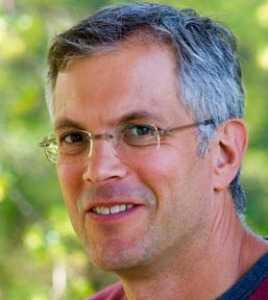 Adam Levine, the author of a new book about the Philadelphia public garden scene was recently the featured guest speaker at the Franklin Inn. He's a charming person, and has given us a great book. He draws to our attention that the Philadelphia region is pre-eminent in the garden world, and has been so for several centuries. While it is true that Philadelphia has a mild enough climate to be suitable to two climate zones, the early settlers came from a region of middle England that has been a garden center since Roman times. And they were Quakers, uncomfortable with the outward show in buildings and furnishings, but flowers were innocent instruments of the display. Although Chanticleer was created by a Pennsylvania German family, the great centers of public gardens are mostly traceable to the influence of Quakers, and the du Pont family. Since one or two years of neglect will ruin almost any garden, the essence of great gardens lies in the ability to survive.
In fact, the Philadelphia area contains hundreds of gardens which have decayed and virtually disappeared. The Horticultural Society is at the heart of garden preservation, financed in large part by the annual flower show, but even that thriving organization is hard pressed to do justice to the vast areas that need tending. Woodlands would be an example of an area needing tending, and Friends Hospital is an object lesson. When that venerable institution was sold to sharp pencil types from out of town, the Azalea gardens on the grounds were closed to visitors, except for two hours a year. It makes you tremble to imagine how long this famous azalea collection will probably survive. Meanwhile, Germantown's famous gardens are maintained in a minimal way, stretching the resources of the owners who have more urgent demands to meet in their buildings and furniture. Indeed, it is hard to name a really outstanding garden within the city limits, with the exception of the Morris Arboretum, which barely makes it within city boundaries. The area back of the Art Museum along Boathouse Row makes a brave attempt in the spring, but it's a pale reminder of the glory which used to be seen in East Fairmount Park, especially at Lemon Hill, Stenton, and Cliveden. Stotesbury is just a relic.
Gardens have moved to the suburbs. Chanticleer, the Morris Arboretum, Longwood Gardens, Nemours, the Scott Arboretum at Swarthmore, West Laurel Hill, The University of Delaware in Newark, Cabrini College in Villanova, Haverford College Arboretum, Temple University's Ambler campus, and the Trenton Sculpture Gardens on the old fairgrounds -- all would demand mention in any list of outstanding gardens in America. But only a few of them aspire to the standards of an outdoor sculpture garden, where the goal was to surround each piece of sculpture with a garden in such a way that only one sculpture could be seen at a time. Now, that was gardening on the grand scale. Hidden in a regional garden scene is the seed merchants, starting with John Bartram and famous under the Burpees, which make gardens possible. After all, there has to be a place to find these things. Perhaps the catalog stores, like Wayside Gardens, are the hope for the future. Every shrub or tree transported from a nursery takes up a ball of topsoil along with the specimen, and the appearance of nurseries around the periphery of a city is usually the first step in the development of housing projects. If there is an investment of topsoil in every garden, perhaps we ought to think a little bit about the way we let the investment dry up and blow away. REFERENCES
Detroit Makes, Philadelphia Takes
Let's look at the economics of a junkyard in a business-school way. Derelict auto bodies worth $80 a ton at current prices can be profitably converted into $235 worth of scrap metal, provided the cost of doing so can be kept below $155 a ton. The Camden Iron and Metal company are able to do so for $115 in expenses, and so reaps a profit of $40 a ton. That's not to mention the relief the owner of a useless car feels when the derelict hulk is taken off his hands, or the relief the City feels in ridding itself of thousands of vehicles abandoned in various alleys and public places. Or the worth to the steel mills of being able to produce new metal at a reduced price compared with starting with iron ore and limestone. Or the benefit to our balance of trade from being able to export the motor blocks and transmissions salvaged intact from the wrecks, leading to foreign motor cars of a quality that may, or may not, withstand impartial examination.. Camden Iron and Metal, Inc. is crawling with engineers who help cope with the currently dwindling steel content of contemporary autos, and the consequent increase in non-ferrous metals, glass, plastic and whatever. The most profitable component of the salvage company thus lies in a subsidiary, Innovative Recycling Products, Inc. The copper content of scrap used to be a headache, but is now a revenue center, for example. There once was a time when scrap iron was chopped up and buried in landfills. Nowadays, people are getting rich digging up such landfills and mining the scrap metal. There are other problems you probably wouldn't imagine, such as the disagreeable discovery that lots of those crushed auto bodies have dead dogs locked in their trunks. It's big business, where a single crane, of which this company has a great many, costs $1 million, and the grinding mills and purifiers cost much more, last only a year, and must be maintained or replaced. There is an increasing plastic content in cars, so that stuff is ground up, pulverized, and burned to produce energy to run the shredding operation. Trucks bringing in a scrap for processing typically run all night on the highways, which reduces the public profile of the salvage operation but increases its 24-hour efficiency. When metal is torn apart, internal friction creates 2000 degree heat, cooled by water, producing huge clouds of steam. The closing of the Bessemer Steel Works reduced the local market for scrap steel, prompting more exports of scrap, and stimulating more search for ways to salvage other ingredients of the scrap. Increasingly, the purification of the raw material has thrust the scrap processors into the role of a pre-processing step in the steel industry. Just as slaughterhouses used to boast of using all of the pig except the squeal, hardly anything is now left of the bodies of discarded autos except for the unattractive scrap heap. Hey, if every housewife admires the idea of household recycling, maybe they can grow to love auto body recyclers. And then, friends, this is Philadelphia so politics enters in. It has come in the form of visits from the Governor who wants the shredder to move to the waterfront, but who also has a struggle with New Jersey over dredging the river channel to balance in his mind. So, sometimes expensive relocation proposals are made, partially implemented, and then suddenly abandoned for reasons best known in Harrisburg and Trenton. It's conjectured that a central issue in this scrap iron struggle is the high price charged for electric power by New Jersey utility monopolies, tending to drive the scrap salvagers over to Pennsylvania. Since macing utilities is a central feature of modern urban political financing, it's equally possible that Pennsylvania power is produced at a subsidized loss in this struggle, or that New Jersey is concealing its tax burden within electric bills. One would have to know more facts to form an informed judgment, in a situation where facts are hard to come by. Hidden River
In Dutch, Schuylkill means "hidden river", thus making it redundant to speak of the Schuylkill River. As soon as you become aware of this little factoid, you start to come across Philadelphians who do indeed speak of the Schuylkill in a way that acknowledges the origin of the term. To give it emphasis, it is common to speak of the "Skookle". The point comes up because cruises have started to leave from the dock at 24th and Walnut Streets, where it becomes quite noticeable that the Schuylkill really is rather hidden as it winds seven miles south to the airport, in contrast to the wide-open vista we all are accustomed to seeing from the Art Museum northwards. The bluff at Gray's Ferry, where the University of Pennsylvania's new buildings now dominate the scene, was originally the beginning of dry land, or the end of the rather large swamp, through which the river winds its way essentially shaded by trees along the riverbank. Never mind the junkyards and auto parks you happen to know lurk behind the trees on the west side or the oil tanks which loom above the trees on the south bank. As evening closed in on the riverboat, the gaily lit towers of center city were looming in the stern, but some fishermen along the bank proudly held up a respectable string of six or seven rather large catfish. If you are there in the evening, the river has the same feeling of wilderness that the Dutch traders would have experienced three hundred years earlier. No swans, however. There were many reports in the Seventeenth Century of large flocks of swans sailing around the entrance of the Schuylkill into the Delaware River. A noted local ornithologist on the recent cruise remarked that forty or fifty species of birds are found there. Even a flock of owls still live within the city limits. You don't see owls, even if you are an ornithologist; their presence is made known by taking recordings of the sounds of the night.
The geography of swampy South Philadelphia was created by the abrupt bend in the Delaware River at what is now thought of like the airport region. As the river flows at the bend, sediment is deposited in mud flats that once created Fort Mifflin of Revolutionary War fame, and later Hog Island of the Naval Yard, home of the hoagie. Swans are beautiful creatures, but they seem to like a lot of mud. The lower Schuylkill is tidal, and the industrial waste of the region is cleaned out of the land by cutting drainage ditches laterally from the river, flooding the lowlands as the tide rises, and draining it again as the tide falls. This cleansing seems to be working, as judged by the return of spawning fish. And maybe mosquitos, as well, but it would seem rude to inquire. The Bartram family seems to have known how to make use of river bends and riverbanks, placing the stone barn and farmhouse higher up the bank, but below the bluff of Gray's Ferry forces a bend in the Schuylkill, below which of course flatlands were created. It's a peaceful place, now made available for tours and excursions by placing a landing dock on metal pilings so that it can ride up and down with the tides. The great advantage is that riverboat landings are no longer restricted to two a day, at high tide, with limited time to visit before the tide falls again. Bartram recognized how popular strange plants from the New World would be in England, and his exotic plants were quite a commercial success. Nowadays the big sellers are Franklinia Trees, available the first week in May. The last Franklin (named of course for his friend Benjamin) ever found growing in the wild, was the one John Bartram found and nurtured. Every Franklinia is thus a descendant of this one. They look rather like dogwood but bloom in the early fall. If it suits the fancy, a dogwood next to a Korean dogwood which blooms in June, next to a Franklinia, can make a continuous display of bloom from May to October. And best of all, no one will appreciate it, unless they are in the know. Wildlife in HaddonfieldA local clinical psychologist once kept a very large pig in his basement which eventually grew to such a size that getting it out of the basement was an engineering problem. The animal was given to his daughter when it was a cute little piglet; it eventually became a family crisis when the little girl had a fit over the suggestion it should be evicted. From this family, we learn that Haddonfield still has laws on its books prohibiting pigs and roosters, for obvious reasons if anybody wanted to keep them. There are no known horses or cows, but an occasional deer wanders by to eat the shrubbery. Dogs and cats don't exactly count. But there are plenty of red foxes, quite large and bold, who seem to make the golf course their home and sneak around town by way of the stream beds and creeks. As do opossums and raccoons, who also have the storm sewers at their disposal. Possums like to climb on the outside of screen doors and windows, so they frequently startle the householders. Raccoons are unbelievably cute, especially when a set of little coons follow their mother single file, usually at night. They have a habit of eating through the roof and nesting in the chimney, causing quite a ruckus the first time in the fall when a fireplace is lit. Raccoons will kill a dog, by lying on their backs and clawing out the dog's underbelly, so not everybody is fond of them. As far as mammals are concerned, grey squirrels simply overrun Haddonfield, and spend a lot of time scolding the cats and dogs.
Some years ago, Japanese beetles were introduced to America first in nearby Moorestown, and now devastate the rose bushes. Their grubs burrow under the lawns, quickly followed by moles who like to snack on them, and either way the lawns suffer. The cure is to spread around the spores of milky spore disease, their natural enemy, and eventually, the roses and lawns recover. It isn't enough to spread milky spore on your own property, because the beetles will fly in from neighboring properties. I must confess to sending my ten-year-old son out at night with a can of milky spore, dusting it for half a mile in every direction. It seems to have worked, but that ten-year-old is now in his fifties, so it doesn't work quickly. There may be snakes and alligators, but no one has demonstrated one lately. Snapping turtles abound in the creeks ten miles from Haddonfield, so it wouldn't be surprising if some of them became venturesome. The local creeks are stocked with trout every spring, but you had better get there quickly before they are all gone. Catfish persist, however. Birds love Haddonfield, and many species migrate back and forth, landing here. Robins like the earthworms in lawns, cardinals, and crows make a lot of noise, swallows, sparrows and unidentified little black jobs are abundant. Blue Jays hate cats and vice versa. But the best part is the owls. You can live your whole life in Haddonfield without seeing an owl, but they are watching you from the treetops. Ornithologists say you can't estimate the owl population unless you put out tape recorders at night, and then you hear an amazing number of them. I've finally found a mating pair in the top of one of my trees, hiding among the branches. They are a lot bigger than most people expect. My personal pair are about three feet long. This past summer a park ranger in Jackson Hole, Wyoming made the disconcerting observation that the nests of eagles usually contain a couple dogs' collars. Since owls are at least as high up the food chain as eagles and lots more plentiful, it's something to worry about if you let your dogs and cats run loose in Haddonfield. The neighbors are pretty fierce about unleashed pets, too.
And this morning, March 31, I looked out the window and some passing workmen were chasing a beaver, trying to take its picture. That's right, a beaver, about three feet long, with a big flat tail. I meant to ask him where he came from, but he disappeared in the neighbor's bushes. In regions where there are a lot of beavers, people generally hate them. A pair of beavers can take down a big tree in half an hour, and a colony of beavers can turn a forest into a desert in a couple of seasons. But unless this fellow comes back, I'm not going to worry about it. East Jersey's Decline and FallThe colony of New Caesaria (Jersey) had two provinces, East and West Jersey, because the Stuart kings of England had given the colony to two of their friends, Sir George Carteret and John, Lord Berkeley, to split between them. Both provinces soon fell under the control of William Penn but it took a little longer to acquire the Berkeley part, so the Proprietorship of East Jersey was the oldest corporation in America until it dissolved in 1998.
It would appear that Penn intended West Jersey to be a refuge for English Quakers and East Jersey was to be the home of Scots Quakers. Twenty of the original twenty-four proprietors were Quakers, at least half of them Scottish. Early governorship of East Jersey was assumed by Robert Barclay, Laird of Urie, who was certainly Scottish enough for the purpose, and also a famous Quaker theologian. Even today, his Apology for the True Christian Divinity is regarded as the best statement of the original Quaker principles. However, Barclay remained in England, and his deputies proved to be somewhat more Scottish than Quaker. Eighteenth-century Scots were notoriously combative and soon engaged in serious disputes with the local Puritans who had earlier migrated into East Jersey from Connecticut with the encouragement of Carteret. This enclave of aggressive Puritans probably provided the path of migration for the Connecticut settlers who invaded Pennsylvania in the Pennamite Wars, so the hostility between Puritans and Quakers was soon established. The Dutch settlers in the region were also combative, so the eastern province of Penn's peaceful experiment in religious tolerance started off early with considerable unrest. Of these groups, the Scots became dominant, even referring to the region as New Scotland. To look ahead to the time of the Revolution, most of the East Jersey leadership was in the hands of Proprietors of Scottish derivation, with at least the advantage that these were likely to have been very vigilant in seeing Proprietor rights originally conferred by the British King, continue to be honored by the new American republic. East Jersey was probably already the most diverse place in the colonies when loyalists and revolutionaries took opposite sides in the bitter eight-year war over English rule, with hatred further inflamed when the victors in the Revolution divvied up the properties of loyalists who had fled. The earlier conflict was created by management blunders of the Proprietary leadership itself. Instead of surveying and mapping, before they sold off defined property, like every other real estate development corporation, the East Jersey Proprietors adopted the bizarre practice of selling plots of land first and then telling the purchaser to select its location. In the early years, it is true that good farmland was abundant, but inevitably two or more purchasers would occasionally choose overlapping plots of land. The Proprietors were astonishingly indifferent to the resulting uproar, telling the purchasers that this was their problem. The outcome of all this friction was that settlers petitioned London for relief, and in 1703 Queen Anne took governing powers away from both the East and West proprietorships and unified the two provinces into a single crown colony. The Queen obviously nursed the hope that South Jersey would impose a civilizing influence on the North, but immigration patterns determined a somewhat opposite outcome. Both proprietorships, however, were allowed to continue full ownership rights to any remaining undeeded property. In later years, the East Jersey Proprietors created more unnecessary problems by attempting to confiscate and re-sell pieces of land whose surveys were faulty, sometimes of a property occupied with houses for as much as fifty years. This East Jersey proprietorship, in short, did not enjoy either a low profile or the same level of benevolent acceptance prevailing in the West Jersey province. A climate of skepticism developed that easily turned any management misjudgment into a confrontation.
The East Jersey proprietorship operated by taking title to unclaimed land, and then reselling it. In what seemed like a minor difference, the West Jersey group never took title itself, but merely charged a fee for surveying and managing the sale of unclaimed land. The upshot of this distinction was that the East Jersey group got into many lawsuits over disputed ownership, which the West Jersey Proprietorship largely escaped. The nature of unclaimed land in New Jersey is for ocean currents to throw up new islands in the bays between the barrier islands and the mainland, or pile up new swampland along the banks of the Hudson and Delaware Rivers. Such marshy and mosquito-infested land may have little value to a farmer but lately has become highly prized by environmentalists, who supply class-action lawyers with that nebulous legal concept of "standing". The posture of the West Jersey Proprietors is to be happy to survey and convey clear title to a particular property for a fee, but a buyer must come to them with that request. The East Jersey method put its proprietors in repeated conflict over possession and title, with idealists enjoying free legal encouragement from contingent-fee lawyers. By 1998, the Proprietors of East Jersey had endured all they could stand. Selling their remaining rights to the State for a nominal sum, they turned over their historic documents to the state archives. The plaintiff lawyers could sue the state for the swamps if they chose to, but the East Jersey Proprietors had just had enough. The only clear thing about all of this is that the Proprietors of West Jersey now stand unchallenged as the oldest stockholder corporation in America. It's not certain just what this title is worth, but at least it is awfully hard to improve on it. Harvard Progressives in Philadelphia
The Progressive movement of the early 20th century is most concisely viewed as a futile social reaction to the vast changes in America caused by urbanization and industrialization after the Civil War. The transcontinental railroad threatened to destroy the wild, wild West, but the enduring environmental movement had overtones of even greater hostility toward industrialization, the cause of it all. In this sense, it joined forces with socialist and labor reform movements, in hating the newly rich, the spoilers, the Robber Barons. It briefly shared sympathies with anti-immigrant groups, while simultaneously expressing great sympathy with the decisions of the people, as opposed to corrupt politicians. There was a strong Calvinist streak in Progressivism, linked back to New England and Harvard its intellectual center. Regardless of any other contradiction, it reflected the viewpoint of Theodore Roosevelt. Teddy Roosevelt, "that damned cowboy" in the view of conservatives, did not invent the ideas of Progressivism, but he surely personified them, illustrated them in action. This confused turmoil of resentments was knocked off the front pages by a real threat to European civilization, the First World War. A terrifyingly well organized German war machine took the place of Robber Barons as a symbol of what was wrong with the world. The crash of 1929 and its ensuing long depression finally put an end to older controversies; it pushed the "reset" button.
To understand the position of Philadelphia's upper crust during the Progressive era, four or five names need to be fleshed out. Owen Wister and J. William White would be important Philadelphia links to the Bostonians Henry Adams and Henry James. All of them were leading literary figures, and all of them were close friends of Teddy Roosevelt. Roosevelt, it might be recalled, was the author of thirty-four books. This little group of literary giants were members of the leading families of Boston, New York, and Philadelphia; what they said, mattered. Although today Owen Wister is mainly known as the author of The Virginian, the first of the cowboy stories of the Wild West, he was, in fact, an observer of the social climates of not only the West, but the deep South (Lady Baltimore ), and the East Coast ( Romney). Some idea of his political leanings can be gleaned from his presidency of the Immigrant Restriction Society, and the authorship of an article called Shall We Let the Cuckoos Crowd Us From Our Nest . Wister has been called "the best born and bred of all modern writers", referring to his descent Water Works, Emblem of the Past
Philadelphia didn't really want the national capital to move to Washington DC, but the yellow fever epidemics, brought from Haiti by refugees, made it politically impossible to reverse the decision to move. We now know that Yellow Fever is transmitted by mosquitoes, but there were enough trash and pollution lying about the that it was plausible that polluted water was the cause. With no time to waste, water was piped in, through wooden pipes, from the comparatively pristine Schuylkill to a pumping station in Center Square, where City Hall now stands. Even today, no one wants a water tower in the neighborhood, so Benjamin Henry Latrobe made it look like a Roman Temple, thereby introducing classical architecture to Philadelphia, and starting quite a trend. The new system worked well enough from 1801 to 1815, when the new city outgrew it. Therefore, a new pumping system was built at the base of Faire Mount, where William Penn once planned to have a mansion, and was attached to Latrobe's wooden pipe system. In a unique and ingenious way,
Frederic Graff pumped Schuylkill water up to a series of reservoirs on top of Faire Mount, utilizing a water stack to maintain constant pressure. The classical architecture was continued, parks and decorative gardens were placed around it, and admirers came from around the world to marvel. Meanwhile, Latrobe's original building could now be torn down, providing room for City Hall, which was planned to be the tallest building in the world, although the French sort of cheated and put up Eiffel Tower, which in a sense really isn't a building. Meanwhile, Philadelphia and the rest of America kept growing and growing, leading to industrial plants along the Schuylkill all the way up to Pottsville, where the anthracite came from. The pure sparkling municipal water of which Philadelphia was so proud soon became a stinking sewer, and the Civil War encampments accelerated the process.
Following the lead of the Philadelphia College of Physicians, the concept of Fairmount Park emerged from clearing the banks of the river, and the Wissahickon Creek, of industry. The Philadelphia Water Works thus became the southern anchor of the largest city park in the world, including the building of Laurel Hill Cemetery, which had sanitary overtones which were embarrassing to discuss. Philadelphia led the world in adapting to this particular feature of the Industrial Revolution, and the insights of Louis Pasteur. By 1890, however, the system was again outmoded, and Philadelphia water became the butt of every joke. Between 1815 and 1840 the wooden pipes were replaced by iron ones. Robert Morris's old estate of Lemon Hill was acquired by Fairmount Park and used to construct a second reservoir on the neighboring hill. More about that second reservoir, in another blog. Eventually, there would be more reservoirs at Belmont and Green Lane. But the city's new reputation for foul water was deserved. Deaths from typhoid fever rose to 80 per 100,000 residents before a water filtration system was installed; deaths from typhoid promptly fell to 2 per 100,000. Statistics on hepatitis were not available, but virus diseases must have been a serious hazard under primitive conditions of filtration, aeration and chlorination -- as they still are in many third-world countries, and in most southern European nations before 1950. As late as 1950 in Philadelphia, it was considered witty for a dowager to accept a drink from her hostess, saying "I'll drink absolutely anything, except Philadelphia water -- and 'Coke' ". The implication was that alcohol sterilizes water, which of course it doesn't, and also that absolutely everybody knows that Philadelphia has terrible water, whatever that means. A reputation like that is bad for the city, making it harder to persuade workers and business to locate here, but the traditions underlying this response are quite ancient. Back in the days when water came from your own well, whole neighborhoods would move to new unspoiled areas to seek cleaner water and regions where the local privies were not yet mature. It takes quite a lot to persuade people to abandon the investment in a home or mansion as in Society Hill, and build a new one in a nearby undeveloped region. Particularly when the germ theory was not yet available to explain the issues with precision, pulling up stakes for a new neighborhood was an accepted reaction to almost any threat.
However, strenuous exertions for half a century have made Philadelphia water safer, tastier, and far cheaper than bottled water. The recent trend of young people to walk about sucking a three dollar bottle of water drives the Philadelphia Water Department up to a wall. For example, 25% of bottled water comes straight from the tap. The inspection standards for public water are much stricter than for commercially bottled water, whose safety is in large part secondary to the safety of the tap water from which it is derived. True, public water is chlorinated, but then it is also fluoridated, putting legions of dentists out of business. In Philadelphia, that's the main difference justifying the rather appalling price difference, and the accumulation of plastic bottles in various trash heaps. The recent advances in Philadelphia's water can in part be traced to Ruth Patrick, now over a hundred years old but the world's foremost expert on streams and water, and to the persistent professionalism of the Philadelphia Water Department. Perhaps, though, it may take a century of slander about water to persuade the politicians to keep their hands off the Water Department. It does take a lot of tax money to implement the third step in the process of cleaning up the water supply, which is the purification of wastewater. For centuries, the guiding principle was to obtain and maintain pure water at the source; wastewater was flushed down the sewer to go back out to the ocean. However, seven times as much water is removed from Delaware, as it flows past the city. That is, the water now recirculates through the sewage system seven times before it is turned over to residents of lower Delaware Bay. The expensive and elaborate -- but scarcely visible -- system of treating sewage in various sewage treatment centers has now resulted in returning water to Delaware in better condition of purity than it had when it came down past Bucks County. But it costs lots of bucks, and nobody seems to notice the water. People only notice the bucks. Urban TransportationStuart Taylor, who spent twenty years working for the Pennsylvania Railroad in the company of our member Bill Brady, recently gave the Right Angle Club his observations about urban transportation, which grew out of his second career as a consultant. As he describes the evolution from the horse-drawn omnibus carriage to the horse-drawn trolleycar, to the steam-driven trolley, to the electric trolley, to the underground subway, certain parallel historic movements occurred to at least one member of this audience.
In the first place, mass transportation is only of value when cities grow to a large enough size to justify the expense. And the growth of cities in the 19th Century was propelled by the Industrial Revolution attracting mass immigration into urban centers. Whether the Industrial Revolution is over or not, is a topic which could be debated, but it was the gasoline engine which made buses and autos attractive, and the decaying slums made cities sufficiently unattractive to cause the flight to the suburbs in the 1920s and 1930s, heavily resumed after World War II in the 1950s. During the heyday of city growth, the evolution of mass transit seemed to be driven by technology, and that in turn attracted private ownership. When the gasoline engine and/or the decline of the Industrial Revolution made the Flight to the Suburbs possible, it made urban transportation unprofitable and hence unattractive to private business owners. Somewhere just before or after the 1929 Crash, the changing situation made it more attractive to live and/or work in the suburbs. A sign of this change in dynamics was the total disappearance of private ownership of public transportation and its supporting infrastructure, and replacement by public ownership and public tax subsidy. As local politics began to reflect this change, Urban politics somehow became dominated by Democrats, and Suburban politics became dominated by Republicans; so the enthusiasm for mass transit has waxed and waned as the political domination of federal subsidies has shifted between the parties. That's probably only an outward sign, however. The real issue is that urban transportation now has to be subsidized since its base has shrunk to the point where people like Widener and Elkins invest in other things. And do so from their homes in exurbia, where the neighbors could care less about subways, let alone pay taxes to subsidize them. And until the city gets control of its crime, public schools, and taxes, it's hard to see what will attract them back in town.
That's perhaps an overly censorious view, coming from a resident of the suburbs. A more economic view of things would be that the construction of underground subways now costs about a billion dollars a mile. Very few cities and no private entrepreneurs can justify costs of that magnitude since the potential ridership cannot afford the costs per ride which are implicit in that capital expenditure. Until the cities can manage to entice the suburbanites back into town, those people will solve their air pollution problems by avoiding the cities. Living to the windward seems much more plausible to them. China is just beginning this process, but they have the advantage of building the subways first, then the surrounding skyscrapers, and thus greatly reducing the costs of avoiding underground sewer systems, etc. If you could call it that, the Europeans had the advantage of massive war destruction, along with much more expensive farmland to inhibit suburbanization. None of this is an argument that we shouldn't build subways, or clean up the atmosphere. It's just a warning of the daunting construction costs and staunch political opposition to mass transit. Not to mention featherbedding, over-hiring, massive hidden benefits costs, and other features which seem to be inherent in union activity, at least of the historical variety. A member of the Right Angle audience asked the speaker what he thought of the proposed Market Street light rail line. Insane, was the answer. No visible ridership. And that seemed to summarize the present debate. Except that it really shouldn't frame the argument for Philadelphia. Philadelphia doesn't need a mass transit network, it already has a mass transit network. Much of it is growing obsolete, but the land costs and local opposition to change are greatly diminished when the network is already there. If any city can do it, Philadelphia can. The technology will surely evolve enough for our purposes if the money is there, and the money will be there if people return to using the city. What Philadelphia needs is a return of business headquarters and other sources of employment, bringing the ridership and the public demand along with it. And for that, what is essentially needed is for government to address our problems of uncontrolled crime, inferior public schools and maladministered taxes. Heron Rookery on the Delaware
When the white man came to what is now Philadelphia, he found a swampy river region teeming with wildlife. That's very favorable for new settlers, of course, because hunting and fishing keep the settlers alive while they chop down trees, dig up stumps, and ultimately plow the land for crops. As everyone can plainly see, however, the development of cities eventually covers over the land with paving materials; it becomes difficult to imagine the place with wildlife. But the rivers and topography are still there. If you trouble to look around, there remain patches of the original wilderness, with quite a bit of wildlife ignoring the human invasion.
Such a spot is just north of the Betsy Ross Bridge, where some ancient convulsion split the land on both sides of the Delaware River; the mouth of the Pennypack Creek on the Pennsylvania side faces the mouth of the Rancocas Cree on Jersey side. In New Jersey, that sort of stream is pronounced "crick" by old-timers, who are fast becoming submerged in a sea of newcomers who don't know how to pronounce things. The Rancocas was the natural transportation route for early settlers, but it now seems a little astounding that the far inland town of Mt. Holly was once a major ship-building center. The wide creek soon splits into a North Branch and a South Branch, both draining very large areas of flat southern New Jersey and making possible an extensive network of Quaker towns in the wilderness, most of whose residents could sail from their backyards and eventually get to Europe if they wanted to. In time, the banks of the Rancocas became extensive farmland, with large flocks of farm animals grazing and providing fertilizer for the fields. Today, the bacterial count of Delaware is largely governed by the runoff from fertilized farms into the Rancocas, rising even higher as warm weather approaches, and attracting large schools of fish. My barber tends to take a few weeks off every spring, bringing back tales of big fish around the place where the Pennypack and Rancocas Creeks join Delaware, but above the refineries at the mouth of the Schuylkill The spinning blades of the Salem Power Plant further downstream further thin them out appreciably. Well, birds like to eat fish, too. For reasons having to do with insects, fish like to feed at dawn and dusk, so the bottom line is you have to get up early to be a bird-watcher. Marina operators have chosen the mouth of the Rancocas as a favorite place to moor boats, so lots and lots of recreational boaters park their cars at these marinas and go boating, pretty blissfully unaware of the Herons. Some of these boaters go fishing, but most of them just seem to sail around in circles.
Blue herons are big, with seven-foot wingspreads as adults. Because they want to get their nests away from raccoons and other rodents, and more recently from teen-aged boys with 22-caliber guns, herons have learned to nest on the top of tall trees, but close to water full of fish. And so it comes about that there is a group of small islands in the estuary of the Rancocas, where the mixture of three streams causes the creek mud to be deposited in mud flats and mud islands. There is one little island, perhaps two or three acres in size, sheltered between the river bank and some larger mud islands, where several dozen families of Blue Herons have built their nests. One of the larger islands is called Amico, connected to the land by a causeway. If you look closely, you notice one group of adult herons constantly ferries nest building materials from one direction, while another group ferry food for the youngsters from some different source in another direction. At times, diving ducks (not all species of ducks dive for fish) go after the fish in the channel between islands, with the effect of driving the fish into shallow water. The long-legged herons stand in the shallow water and get 'em; visitors all ask the same futile question -- what's in this for the ducks? The heron island is far enough away from places to observe it, that in mid-March its bare trees look to be covered with black blobs. Some of those blobs turn out to be heroes, and some are heron nests, but you need binoculars to tell. When the silhouetted birds move around, you can see the nests are really only big enough to hold the eggs; most of the big blobs are the birds, themselves. There are four or five benches scattered on neighboring dry land in the best places to watch the birds, but you can expect to get ankle-deep in the water a few times, and need to scramble up some sharp hills covered with brambles, in order to get to the benches. In fact, you can wander around the woods for an hour or more if you don't know where to look for the heron rookery. Look for the benches, or better still, go to the posted map near the park entrance south of the end of Norman Avenue. There are a couple of kiosks at that point, otherwise known as portable privies. Strangers who meet on the benches share the information supplied by the naturalists that herons have a social hierarchy, with the most important herons taking the highest perches in the trees. That led to visitors naming the topmost herons "Obama birds", and the die-hard Republicans on the benches responding that the term must refer to dropping droppings on everybody else. That's irreverent Americans for you. There is quite a good bakery and coffee shop just north on St. Mihiel Street (River Road), and the new diesel River Line railroad tootles past pretty frequently. That's the modern version of the old Amboy and Camden RR, the oldest railroad in the country. It now serves a large group of Philadelphia to New York commuters, zipping past an interesting sight they probably never realized is there because they are too busy playing Hearts (Contract Bridge requires four players, Hearts are more flexible). However, there's one big secret. The birds are really only visible in the Spring until the trees leaf out and conceal them. Since spring floods make the mud islands impassible until about the time daylight savings time appears, there remains only about a two-week window of time to see the rookery, each year. But it is really, really worth the trouble, which includes getting up when it is still dark and lugging heavy cameras and optics. Dr. Samuel Johnson once remarked that while many things are worth seeing, very few are worth going to see. This is worth going to see. And by the way, the promontory on the other side of the Rancocas is called Hawk Island. After a little research, that's very likely worth going to see, too. Reservoir on Reservoir Drive William Penn planned to put his mansion on top of Faire Mount, where the Art Museum now stands. By 1880, long after Penn decided to build Pennsbury Mansion elsewhere, city growth outran the capacity of the new reservoir system which had then been placed on Fairmount. An additional set of storage reservoirs were placed on another hill across East River (Kelly) Drive, behind Robert Morris' showplace mansion now called Lemon Hill (Morris merely called it The Hill); the area was eventually named the East Park Reservoir. In time, trees grew up along the ridge and houses got built; the existence of these reservoirs right in the city was easily forgotten, even though the towers of center city are now plainly visible from them. These particular reservoirs were never used for water purification; that's done in four other locations around town, and the purified water is piped underground to Lemon Hill, for last-minute storage; gravity pushes it through the city pipes as needed. 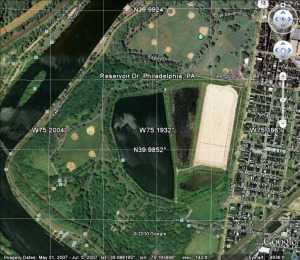 Now, here's the first surprise. Water use in Philadelphia has markedly declined in the past century. That's because the major water use was by heavy industry, not individual residences, so one outward sign of the switch from a 19th Century industrial economy to a service economy is -- empty old reservoirs. Only one-quarter of the reservoir capacity is in active use, protected by a rubber covering and fed by underground pipes. The rest of the sections of the reservoir are filled by rain and snow, but gradually silting up from the bottom, marshy at the edges. Unplanted trees have grown up in a jungle of second-growth, attracting vast numbers of migratory birds traveling down the Atlantic flyway. Although there are only a hundred acres of water surface here, the dense vegetation closes in around the visitor, giving the impression of limitless wilderness, except for the center city towers peeping through gaps in the forest. It's fenced in and quiet except for the birds. For a few lucky visitors, it's easy to get a feeling for how it must have looked to William Penn, three hundred or more years ago, and Robert Morris, two hundred years ago. In another sense, it demarcates the peak of Philadelphia's industrial age, from 1880 to 1940, because that kind of industrialization uses a lot of water. The place, in May, is alive with Baltimore Orioles. Or at least their songs fill the air and experienced bird watchers know they are there. Even a beginner can recognize the red-winged blackbirds, flickers, robins, and wrens (they like to nest in lamp posts). The hawks nesting on the windowsills of Logan Circle suddenly makes a lot more sense, because that isn't very far away. In January, flocks of ducks and geese swoop in on the water surface, which by spillways is kept eight feet deep for their favorite food. Just how the fish got there is unclear, perhaps birds of some sort carried them in. The neighborhoods nearby are teeming with little boys who would love to catch those fish, but it's fenced and guarded much more vigorously since 9-11. In fact, you have to sign a formal document in order to be admitted; it says "Witnesseth" in big letters. Lawyers are well known for being timid souls, imagining hobgoblins behind every tree. However, there are some little reminders that evil isn't too far away. Just about once a week, someone shoots a gun into the air in the nearby city. It goes up and then comes down at random, with approximately the same downward velocity when it lands as when it left the muzzle upward. That is, it puts a hole in the rubber canopy over the active reservoir, which then has to be repaired. No doubt, if it hit your head it would leave the same hole. So, sign the document, and bring an umbrella if the odds worry you. 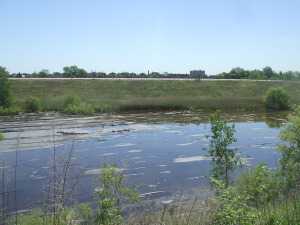 A treasure like this just isn't going to remain as it is, where it is. It's hard to know whether to be most fearful of bootleggers, apartment builders or city councilmen, but somebody is going to do something destructive to our unique treasure, possibly discovering oil shale beneath it for example, unless imaginative civil society takes charge. At present, the great white hope rests with a consortium of Outward Bound and Audubon Pennsylvania, who have an ingenious plan to put up education and administrative center right at the fence, where the city meets the wilderness. That should restrict public entrance to the nature preserve, but allow full views of its interior. Who knows, perhaps urban migration will bring about a rehabilitation of what was once a very elegant residential neighborhood. And push away some of those reckless shooters who now delight in potting at the overhead birds. 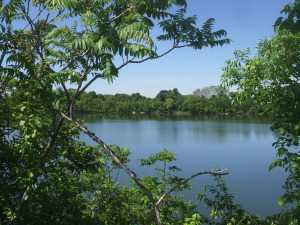 This whole topic of waterworks and reservoirs brings up what seems like a Wall Street mystery. Few people seem to grasp the idea, but Philadelphia is the very center of a very large industry of waterworks companies. The tale is told that the yellow fever epidemics around 1800 were the instigation for the first and finest municipal waterworks in the world. There's a very fine exhibit of this remarkable history in the old waterworks beside the Art Museum. But that's a municipal water service; why do we have private equity firms, water conglomerates, hedge funds for water industries, and other concentrations of distinctly private enterprise in the water? One hypothesis offered by a private equity partner was that the success of the municipal water works of Philadelphia stimulated many surrounding suburbs to do the same thing; it was surely better than digging your own well. This concentration of small and fairly inefficient waterworks around the suburban ring of this city might well have created an opportunity for conglomerates to amalgamate them at lower consumer cost. Anyway, it seems to be true that if you want to visit the headquarters of the largest waterworks company in the world, you go about seven miles from city hall and look around a nearby shopping center. If you are looking for the world's acknowledged expert in rivers, you go to the Academy of Natural Sciences of Philadelphia on Logan Square and look around for a lady who is 104 years old. And if you have a light you are trying to hide under a barrel, come to Philadelphia. Marcellus Shale Gas: Good Thing or Bad?
Soon after discovering widespread hard and soft coal, Pennsylvania found in Bradford County it also had oil. Local oil was particularly "sweet", with a low sulfur content. Long after much cheaper oil (cheaper to extract, that is) was found in Texas and Arabia, Pennsylvania oil was prized for the special purpose of lubricating engines, which commanded a higher price. This discovery of oil in the western part of the state also provided a vital competitive advantage for local railroads. Other east-west railroads like the New York Central and the Baltimore and Ohio lacked a dependable return cargo like this, so the Pennsylvania Railroad lowered prices and became the main line to the west for a century. Refineries were built in Philadelphia, and continue to dominate Atlantic coast gasoline production, even though the source of crude oil is mostly from Africa. When oil and coal declined in use, Pennsylvania's industrial mightiness declined, too. Philadelphia and Pittsburgh lost much of their competitive advantage, while the center of the state just about went to sleep. When even Texas oil later ran low, America's industry turned to computer-improved productivity to keep its prices competitive, helping California at the expense of Pennsylvania. The bleakness for Pennsylvania may not last, however. Suddenly, we discover we have another enormous source of cheap energy, shale gas. It's rather deep, however, even deeper than our supply of fresh water. The next layer below surface minerals is porous rock filled with fresh water, the so-called aquifer. Gas bearing shale is layered just under the aquifer. We'll return to the aquifer later. There is and will be abundant oil in the world, well into the future; but cheap oil has been selectively depleted. When military and economically weak nations like the Persian Gulf had cheap oil, only transportation costs were irksome. But now Russia is emerging as an oil-rich state, previously impoverished states like Iran are asserting themselves, the existence of an international oil cartel becomes more threatening because it reinforces oil price with military threats. Raw material discoveries -- gold rushes -- are always destabilizing because they are tempting to the dictator mindset. That's known in the political literature as the source of the "Dutch Disease", not because Netherlanders are aggressive, but because North Sea oil discoveries destabilized the politics of even that little peaceful nation. America has now made a universal decision to establish energy independence. It once was credible to make predictions that in a decade or two, we would run out of competitively priced energy. To be both rich and weak invites aggression and we knew it.
There's little question America is profligate with its energy, so the need for energy conservation is undisputed. Actually, we are already five times more efficient with energy use than China is; furthermore, we have improved energy efficiency by 20% while China has defiantly worsened. We'll do better, but unfortunately, our immense investments in inefficient home heating and transportation are too costly to discard abruptly in both cases. There is also little question that American research and development of alternative energy sources has been neglected, while China is subsidizing R & D appreciably. In our frenzy, converting food into gasoline by subsidy is a bad joke, electric cars are subsidized and widely described as "Welfare buggies", wind power is twice as costly as carbon-sourced energy and needs better battery development to be able to store it, atomic energy has been encouraged by the French government, but totally held back by ours, in response to public anxieties. The long and the short of it is this: we face a fifteen-year period of doubtful energy sources, a vulnerability our international competitors and enemies might easily use against us. And then along came shale gas, like a gleaming savior on a white horse. For seventy-five years, the world has known unlimited amounts of petrol carbons are locked into vast stores of shale. Unfortunately, it is buried deep, and located where it is expensive to transport to market. The techniques for extracting such carbons were unacceptably expensive in a world that shrugged off abundant oil. Politics and geology turned against us; we now need fifteen years of catch-up to make alternative energy sources more affordable. Cheap oil ran out before non-carbon sources became practical. But miraculously shale gas is now upon us, right here in Pennsylvania. It takes a long time to map out the existence of shale from Canada to Texas, when it is 8000 feet deep; it was first recognized in 1839 from a cliff outcrop around the little town of Marcellus, New York and vigorously explored in the disappointed hope it would lead to discoveries of bituminous coal, iron ore or other minerals. Land speculators have been roaming Pennsylvania for two centuries. Now, they are offering $5000 an acre plus royalties, just for the right to drill. In 2010, probably 5000 leases will be issued. Needless to say, the discovery is popular with local farmers, and "gas fever" has enormous political momentum. With techniques discovered around Fort Worth, Texas, about 10% of the existing gas can be extracted easily, serving America's energy needs for much of the 15 years required to make renewable, non-fossil, energy cheap and practical. This long history paradoxically accounts for the apparent suddenness of the current popularity; it's not a new mineral discovery, it is the development of practical extraction methodology at a critical political and marketing moment.
And equally needless to say, the environmental movement is being called to its barricades. Whatever is their objection to drilling for gas, 8000 feet below the surface of a wilderness? In the first place, just cutting roads through the forests is destructive to migrating and local bird populations. In a well-known process of "fragmentation", the cutting of roads allows an invasion of raccoons and similar bird predators. Forest fragmentation simply cannot be avoided if drilling rigs are to enter and leave the forests; some vulnerable bird species are bound to go extinct. This particular region is particularly prone to emissions of radon, which is a radioactive gas traveling along the stone layer and occasionally entering the basement of houses; will drilling through to the shale layer make radon seepage better or worse? Furthermore, since this sedimentary shale layer lies underneath the aquifer, drilling must go through the freshwater-bearing caverns before it gets to the shale; expensive sealing methods may be needed to keep the contaminants below from seeping up through and around the drill holes. The practice of fracturing the shale by high-pressure mixtures raises issues with water, sand, and chemicals. Water consumption is millions of gallons per year per well, seemingly enough to drain the rivers and creeks. Some operators will be tempted to use the aquifer as a surreptitious source of water, leading to consequences hard to anticipate. The sand is meant to support the walls of the rock fractures but may clog up other channels unintentionally. And the composition of the chemical drilling components is a trade secret which the extraction companies naturally wish to keep private; it's pretty hard to get public approval of a secret. So to sum it all up, there is a legitimate need to hurry the drilling, and there are legitimate environmental safety issues to be addressed, slowing it all down. New York State has passed laws prohibiting further drilling. Is that an opportunity for Pennsylvania, or a warning we should heed?
This is a time for serious negotiation, and the spending of serious amounts of money on study and monitoring, not for shouting. Politicians sense you can't make omelets without breaking eggs. For them, it's a question whether to choose to be blamed for the inevitable problems of exploring new science, or whether to be blamed for lack of patriotism in a national emergency. The amount of heedless rhetoric is predictably extreme, and the money available to spin it is daunting. If there is anything resembling a middle road in this uproar, let's explore it. In the first place, some sensible discussion between scientists of both sides can be held immediately. Geologists are probably unaware of issues like forest fragmentation, while naturalists are probably unfamiliar with radon hazards and available drilling precautions. Some concerns are exaggerated, some are unsuspected; let's get the experts together quickly and establish most of the knowns and unknowns before popular media runs away with the issue. Let's get the responsible leaders of the gas extraction industry into continuous dialogue with the responsible leaders of environmental protection organizations, so wars they get dragged into are real and not hysterical. Let Congress consider the issue and appropriate funds immediately to study the issues everybody agrees need to be addressed. It seems very likely the huge corporations involved in this issue will rather easily agree among themselves on responsible positions unless they get rattled by overly vocal denunciations. Since this is a gold rush, however, it is also likely that underfunded small operators will start to employ short-cuts and rush heedlessly into dangerous territory; large operators will wish to have laws passed to restrain everybody, small operators will plead fairness. The more transparency this field has, the better. And the most immediately obvious area of resistance to transparency is the natural wish to protect trade secrets in the composition of drilling fluids. In time, the other continents of the world will develop satisfactory drilling fluids; the secret won't last long. The situation cries out for the large operators to negotiate among themselves so those who have an incentive to protect secrecy can tell us how to do it responsibly, while those with a political incentive to expose secrets can be offered time limits related to the how fast the rest of the world catches up. Politicians particularly need to be offered some mechanism for assuring the public about those secret injection ingredients. Anyway, let's negotiate a way to take chances we have to take, but avoid the costly blunders of studying the issue to death. Hurry up, folks, it's a matter of time before problems have to be faced. Pennsylvania Likes Private Property Private
William Penn was the largest private landowner in America, maybe the whole world. He owned all of Pennsylvania, with the states of Delaware and New Jersey sort of thrown in. Although he and his descendants tried actively to sell off his real estate from 1684 to 1783, they still held an unsold three-fifths of it at the conclusion of the Revolutionary War, which they were forced to sell to the state for about fifteen cents per acre. This bit of history partly explains both the strong feeling this is private, not communal, land despite the existence of 2.3 million acres of the state forest system, which is affirmed right alongside the rather inconsistent feeling that raw land is somehow inexhaustible. Early settlers regarded the center of the state as poor farmland, particularly when compared with soil found in Lancaster and Dauphin Counties, or anticipated by settlers going to Ohio and Southern Illinois. A complimentary description is that glaciers descended to about the middle of Pennsylvania, denuding the northern half of topsoil which was then dumped on the southern part as the glaciers receded. Even today, farmers tend to avoid the northern region if they can, reciting the ancient advice from their fathers that "Only a Mennonite can make a go of it, around there." So, lumbering had a century-long flurry in Central Pennsylvania, exhausting the trees and moving on. But that only related to the top layer of soil; beneath it lay anthracite in the East, and bituminous coal in Western Pennsylvania, supporting the steel industries of the two ends of the state with exuberant railroad development. Even today worldwide, hauling coal is the chief money-maker for railroads. The resulting availability of rail transport promotes the location of heavy industry near coal regions; the 20th Century decline of coal demand ultimately hurried the decline of heavy industry in the state by impairing the railroads. Beneath all this lie the aquifers, porous caverns of fresh water. And beneath that, largely unsuspected for two centuries, lie the sedimentary deposits of a huge inland sea, compressed into petroleum which evaporates into natural gas. All of this is held by huge deposits of semi-porous shale rock, now mostly 8000 feet deep, stretching from Canada to Texas and called the Marcellus shale formation. If it can be economically recovered, there is more natural gas than in Arabia, and there is a similar formation along the near side of the Rocky Mountains in Colorado, stretching up to the Athabasca tar sands in Canada. There is another similar formation in France underneath Paris. No doubt, we will find the whole world has similar huge deposits for which the main problem has always been: how do you get it out? There's another question, of course, of who owns it. Those who clearly do not own it maintain that everyone owns it. In the western world, most particularly in America, it is our firm belief that if you live on top of it, you own it. Since it is expensive to extract, quarrels like this are usually settled by purchasing mineral rights from the surface owner, who generally could not possibly extract it by himself. Those who assert they have a conflicting right to it because it belongs to everyone can expect belligerent resistance. At the present time when America faces a critical fifteen year period of dwindling oil supply, ultimately relieved by perfecting alternative energy sources, there is too little time to achieve consensus for any other governance theory. The problem which could possibly gain enough traction to interfere is the issue of potential damage to others which might result from the extraction of this subsurface treasure. Because of the apparent urgency of a decision to extract or go elsewhere to extract, the best we can hope for is some fairly rough justice. Gum
The ancient Greeks and Romans are said to have enjoyed a sort of chewing gum. The ingredients are uncertain but unlikely to have been chicle, the sap of a variant rubber tree, which was taken up by the Mayans in the First century. The vision thus ensures that Mexican soldiers might well have been chomping when they set out to conquer Texas and devastate the Alamo. Conceivably Santa Ana himself was popping bubbles when Sam Houston found him crawling through the tall grass when he should have been dying like a man. What is not so fanciful is that Santa Ana did go into exile in the United States, seeking refuge on Staten Island. Taking along a large supply of chicle, he was hoping to find a way to change it into rubber and thus restore his fortunes. His New York landlord, a photographer named Adams, struggled unsuccessfully for months to change the gum into rubber, but eventually switched over to chewing gum of chicle. This Mexican rubber variant is chewy only within a narrow temperature range, getting brittle when cold, and sticky when hot. The outcome of this bizarre episode was the Adams brand of chewing gum, a dominant feature of our culture until 1922 when William Wrigley, Jr. of Chicago added a mint flavor and made a great fortune selling the hope that minty taste would clean your teeth, sweeten your breath, and improve attractiveness to the opposite sex. Wrigley must have been a great businessman, since the Wrigley Building still dominates central Chicago, while everyone knows about Wrigley baseball field, and his descendants even run a private railroad through the Copper Canyon south of Tucson into Mexico. Wrigley's winter mansion sits on top of a small mountain outside of Phoenix, once affording a grand view of the surrounding desert for many miles. But subprime mortgages helped build up the desert, so at night there is now a sparkling view of the lights of Phoenix suburbs, longingly gazing up at Wrigley's mountain fastness filled with pictures of relatives who got themselves great notoriety, mostly related to unfortunate escapades with love. Well, whatever. By 1960 a cheaper synthetic chemical came to replace chicle in Chiclets without distressing the customers and seemingly making it commercially practical to spread this central feature of American culture to Asia, Europe and beyond, with the notable exception of France which makes their cultural superiority a point of national pride. On further reflection, if they prefer vintage chicle to the present chemically improved synthetic, the French may have an important insight. Just look at our filthy sidewalks. Other cities may be more diligent in scrubbing their sidewalks, but at least in Philadelphia, the new synthetic chewing gum is leaving its mark. The realization gradually creeps up on you that sidewalks near popular corners of the center city are spotted with round black spots, slightly larger than a silver dollar, but uniformly black. Just what the sidewalks around high schools look like, I tremble to consider. But those city corners where a sidewalk vendor parks his cart are particularly peppered, representing the disgusting habit of spitting the chew-gum on the sidewalk before eating the hot dog. The detritus is flattened out by someone's shoe, and the result is quite distinctive. As I was contemplating a particularly loathsome street corner, a passing Philadelphia Grand Dame shared her insight with me that the gum attracts dirt and gets black. I somehow doubt that because it is such a uniform blackness. It seems more likely that the trade secret chemical deteriorates in the sunlight, and being less sticky than the traditional goo, sticks to the sidewalk instead of the shoe which squashes it. So think this over. Someone was recently chewing that stuff; would you kiss that person? If it's fresh enough, it might transmit the flu virus to your shoe; ye Gods, maybe the HIV virus, perish the thought. There's a great absence of evidence about the disease transmissibility of this unknown material. Maybe our congressmen should take a recess from blaming Wall Street for the decline of Greece and Portugal. And make chew-gum scoopers just as mandatory as pooper scoopers. Footnote: A fellow member of the Right Angle Club recently revealed he had once worked for the Philadelphia Chewing Gum Company in Havertown, which was closed by new owners in 2003. While he didn't know anything about the ingredients of gum, he could report that this company used trainloads of old rubber tires for some purpose. On further checking, it is stated in the literature that at the present time, no chewing gum doesn't use rubber, so apparently Santa Ana's dream has finally come true in a round-about way. Green Roof at Peco
The Horticulture Society, the Hort to locals, recently conducted a tour of the green roof which Philadelphia Electric, now Exelon has put on the top of that big black building across the street from 30th Street Station. It's a large flat roof, and the ten varieties of sedum are quite handsome. It's a public service activity, however, designed to help the environmental movement get up some momentum. When you look out at the Philadelphia landscape from the top of a skyscraper, it's possible to see a whole new dimension to the city. On its top, Philadelphia is one huge sea of roofs. If all of those roofs were planted, it would indeed make a huge difference of some sort. Unfortunately, the vast majority of those roofs are residential, slant-roofed, and small. The Peco roof involved a considerable amount of tailor-made work which would have to be streamlined to make it practical for residences. First, a waterproof liner is put down, then layers of artificial plastic dirt on cushioning layers. Then the plant layer is unrolled, filled with seeds and sprouts of ten different varieties of sedum. Over time, Darwinism takes over, to make the most suitable variety of sedum thrive in the areas most advantageous to it, probably with some judicious watering to get it all started. The result is to reduce the roof temperature in summer from around 160 degrees to 70 degrees, with a consequent reduction in air conditioning costs. It does look rather pretty. But then some hard facts of economics enter into the discussion. The roof is thought to last fifty years instead of the usual twenty since most deterioration is due to sunlight. Most homeowners don't last fifty years, however, and in fact, the average duration of ownership is around seven years. Most homeowners are skeptical they could pass on the cost to the next owner, and therefore are dubious of promised savings. Churches, museums and public buildings are therefore the most likely market in the early going. The Quakers, as usual, were the first adopters, for their administrative center at fifteenth and Cherry. And then, there is the height of the building, which is sort of a catch-22. The taller the building, the smaller the proportion of cost savings to the owner; for the most part, the lower stories of a skyscraper are unaffected by what's on the roof. So, office buildings are unlikely to take up the green roof revolution first, or for strictly economic reasons. That leaves mostly residential roofs, which are mostly slanted in this town; the Bauhaus movement hasn't caught on much in this country. It has made more progress in Germany, and Tel Aviv is said to be predominantly Bauhaus. Consequently, we hear tales of these cities getting ahead of us, but it figures. It will be a long time before what Weir Mitchell called The Red City gets rebuilt in a flat-roof style. The proponents feel that green roofs can be adapted to slant-roof structures, but the objections to snow and rain accumulations are obvious obstacles to a city-wide transformation which would even so take a very long time. There's even a problem with birds, who tend to drop weed seeds where ever they roost. Crabgrass, for example, is an annual which dies each year. Not everybody is willing to devote time every summer to pulling crabgrass off the roof. So, here's another advantage for skyscrapers, which is to say a disadvantage for houses. And some financial wizardry has got to be devised to pass the green roof investment of thousands of houses on to the next, skeptical, owners. And inventors and tinkerers have got to find a thousand little ways to make this process cheaper; at present, it takes too many different tradesmen and artisans to put it all together. In short, it probably costs too much at present to hope to be popular. Our reaction here is generally favorable to the idea but skeptical of the economics. Except for altruists, idealists, and experimenters. It would seem very fine if more people took it up and perfected it. Meanwhile, it may really not be "ready", as the Quaker says. Do Computers Thrive on Lead Poisoning?
At a local outlet of a well-known chain of computer stores, the geek told me that small computer towers don't last as long as big-box desktops, perhaps only three years compared with the old five-year lifespan. And that's because they get hotter. Which is because they run faster than they used to, and also because a federal regulation prohibiting the use of lead in soldering joints makes the wiring wear out sooner. By the time he was done explaining things to me, I was ready to run out and join the local political Tea Party. Because I don't think it's very likely that toddler children will be eating my solder very soon, or even ever. And indeed, I have trouble imagining any children anywhere in the world ever nibbling on computer innards, even once. Maybe the concern is that the heat will vaporize the lead, and little children crawling on the floor will inhale the lead vapor, getting lead poisoning that way. While that may be somewhat more plausible than eating computer parts, or eating vegetables grown in the neighborhood of trash disposal, or breathing the air full of lead fumes -- it doesn't really seem very plausible at all. It is generally reckoned that 835 million computers worldwide were manufactured in 2010. If they cost an average of $500 apiece and lasted 40% less long than if they used lead solder, the world would end up buying 300 million additional computers per year, conservatively spending $1.5 billion more dollars a year to do so. Are the dangers of lead poisoning so threatening that such a cost is justified on a hypothetical basis? The people who do the soldering are possibly at somewhat greater risk, but you could buy a lot of masks and air purifiers for the extra cost for computers alone. Can this possibly be true? Is it possible that the geek in the computer store is just selling warranty insurance, or more expensive computers when he passes on this news? Is it possible that the makers of fumes ventilators are promoting their products in this way? How about the plaintiff trial lawyers. Are they calculating that frenzied citizens will wander into jury duty and be concerned to punish the evil makers of computers with gigantic penalties, of which the lawyers will get 40%? Or the makers of cool computer boxes are competing indirectly with the evil makers of hot computer boxes? This article ends with a comment section. Those who can offer references to the facts, in this case, are urged to send them in. Something in this story doesn't stand the light of day, and perhaps a way can be found to shine a little light of day on the facts. South Philadelphia: Ideal Intermodality Transportation SiteThe Right Angle Club was recently visited by Troy Adams, representing the Greater Philadelphia affiliate of the regional Chamber of Commerce. Sustained by contributions from sixty local corporations, the Greater Philadelphia organization is a major storehouse of data useful for businesses, supported by a staff of analysts and computer experts. The purpose of this institution is to help businesses who are trying to decide whether or how to locate in the Philadelphia region. With such an organization behind him, Mr. Adams was able to show a number of slides displaying the demography, geography, and statistics about our region, and his appearance is greatly appreciated. This is definitely the place to go if you have questions of that sort. It would probably also be a good place to go for opinions and gossip about the politics and inside baseball of the town, but the Chamber has a strict rule about avoiding any involvement in business moving from one district to another within the region or hearsay that might lead to such internal friction. One really important insight into the potential of our region concerns South Philadelphia. Historically, this was the place where the Schuylkill and Delaware Rivers met, and was once a very big swamp (wetland, nature sanctuary or whatever). Over time, the swamp became a trash and garbage landfill, and over still more time it became a big flat uninhabited area right next to a big city. But then an Interstate Highway (I95) was built on its circumference, and several rail lines, and an international airport, not to mention extensive port and shipping terminals for ocean transport. While it is true that a certain number of houses would have to be purchased and demolished to accomplish it, the potential exists for the construction of an intermodal interconnection which would be almost unique in the world.
There would be plenty of lands left over for industries related to freight forwarding and the like (the food distribution center is a good example of the general concept), and all of this would be within twenty minutes of the center of a major city. SEPTA already sends a passenger rail spur from the very heart of the city to the very center of the airport, and there is no reason it could not be extended to include ocean, bus, and distribution terminals. Whether this exactly fits with the extensive sports stadium complex in the area is unclear, but these entertainment features are doing no harm to the intermodal interchange idea in the meantime. Judging by the city government's willingness to tear these structures down every five or ten years, there should be no great resistance to moving them elsewhere if the need should arise. Reviving Schuylkill: Eight Miles From the Dam to Ft. Mifflin
Joshua Nims of the Schuylkill River Development Corporation recently addressed the Right Angle Club about current activities of that organization. It's a non-profit corporation, but in a sense is a quasi-City agency, spending State and Federal funds, plus remediation funds. Just what remediation funds are was not clearly explained, but seem to be fines or assessments on companies who are thought to have fouled up the environment. Whether those assessments are fair or unfair, too small or too large, are political issues largely avoided in Mr. Nims' presentation, and hence are avoided here.
The Gray's Ferry area is certainly an urban tragedy of epic proportion, but since its deterioration began in 1856, the events of the Civil War probably had a lot to do with it. Up until the Civil War, the western banks of the Schuylkill, especially around Gray's Ferry, were famously upscale and beautiful. The South Street Bridge, for example, was originally envisioned as leading into a boulevard of the Arts, with the University Museum, Irvine Auditorium, the University Hospital and the mansions on the top of the hill setting off what promised to become a striking cultural statement. Anthony Drexel himself lived up there, walking it to work at Third and Chestnut. And that's just one famous example. It's hard to know what started the blight, but Harrison Brothers White Lead, Color and Chemical Works might be a good candidate and the fact that the area soon developed the tracks often (10) smoke-belching railroads was certainly another major issue. The western bank of the Schuylkill rose to a high rocky promontory at Gray's Ferry, crowding wartime industrialization into a narrow place. Before that, Gray's Ferry Bridge had been the main artery to the South, traveled by George Washington many times, often stopping at Woodlands, that palatial home of Andrew Hamilton the original Philadelphia lawyer. A century before that, the Dutch fur traders had found it to be the first firm land after they sailed inland through the swamp, while the Indians knew it was the last forest area before you reached the (South Philadelphia) area of malaria, yellow fever and other mysterious vapors that must be avoided. In the sense of land travel, Gray's Ferry was, therefore, the most prominent part of the Philadelphia landscape for two centuries. The ferry itself was a floating bridge, pulled back and forth by ropes on each shore of the river. Given a choice of pretty much all of the North American continent, John Bartram placed his farm just south of this promontory. Where it still stands today but surrounded by slums and urban decay. It's a little hard to judge whether the Civil War pushed railroad construction into the only rocky crevice suitable, and then industrial pollution followed with vile and noxious effluents, or whether the Harrison Lead, Color, and Chemical factory simply started it across the river in the river bend. That's where the DuPont paint factory relocated in 1916, and in fact, the Duponts get local blame as polluters when in fact they made considerable effort to clean things up after they acquired it. The area had a major slaughterhouse abattoir, and an asphalt plant and several other major inducements to the populace to abandon their elegant mansions and run for their lives. The place now has old rusting bridges, tumble-down concrete pilings, lots of weeds, and not a single living fish for a century in that water. To diffuse the blame somewhat, it should be remembered that after the War of 1812, the Schuylkill was the main transportation artery for coal coming down from Pottsville and the rest of Schuylkill County. The river didn't have a sandy bottom, it was pulverized anthracite which releases acids and toxins when washed. So that's the river region the Schuylkill Development Corporation plans to line with grassy running paths and benches to admire the view. Maybe the Wilson Steamship Line or something like it can again be persuaded to bring tourists here, or maybe the riverbanks can be lined with hotels to house people who take rides on river flatboats, as they do in San Antonio. Or dare we mention it, maybe Paris. Maybe Philadelphia can once again be a tax collector's idea of heaven, together with five-day weekends.
At the moment, this little non-profit city agency is run on a $500,000 operating budget, and has about $20 million worth of projects in progress. Some of that is reparation money pried from the grandchildren of the owners of those factories who did the damage over a century ago, and some large part of it is Philadelphia's share of the boodle from the Stimulus package. There's no doubt the area will look immensely improved in the next year or two, and a lot of hope that private investment will be attracted to an area previously shunned vigorously. The area which has already been cleaned up, from the Wissahickon to the Dam, really must be called a great success; there's lots of foot traffic and joyousness. And the area can also be praised in what unfortunately is the measurement of modern urban development: it has only had two lawsuits for sprained ankles, and only two muggings, quite a commendable record. But now development is going past South Street, into much murkier areas, with more low-income residential spaces. Surveillance cameras are planned, and bright lighting, but it's far from certain that a little strip of gentrification can defeat miles of surrounding decay. Only if they pull it off will private investment creep into the area, and the parents of University students permit their children to run there. If private investment arrives, this organization can do no wrong, because only then can it fairly be described as "Infrastructure". My own definition of infrastructure as an economic stimulus is of early public spending on projects which would have eventually consumed the money anyway, except later. By that standard, infrastructure spending's only true cost would be the interest on borrowed money to do it sooner. Let's make a note to revisit this experiment in a couple of years, cautiously wishing everyone the best, in the meantime. Tyler Arboretum
There are over thirty arboreta in the Philadelphia region, and one of the oldest and largest is located in Delaware County. The 650 acres of the Tyler Arboretum, adjoining 2500 acres of a state park, create a rather amazing wooded area quite close to heavily settled urban Philadelphia. The Arboretum is located on land directly deeded by William Penn, but it was privately held until 1940 and so is not as well known as several other arboreta of the region. The early Quakers, it may be recalled, often disapproved of music and "artwork", so their diversions tended to concentrate on various forms of natural science. The first director of the Tyler, Dr. John Wister, planted over 1500 azalea bushes as soon as he took office in the 1940s. They are now seventy or eighty years old, quite old and big enough to make an impressive display. Even flowering bushes seemed a little fancy to the original Quakers. The interests of the earlier owners of the property were more focused on trees, especially conifers. The property contains several varieties of redwoods, including one impressive California redwood, said to be the largest east of the Mississippi. High above the ground, it splits into two main branches, the result of depredation by someone cutting the top off for a Christmas tree. So a large area near Painter Road is enclosed by a high iron fence, containing most of the conifer collection, and warding off the local white-tailed deer. Several colors of paint are to be seen high on many prominent trees, marking out several walking trails of varying levels of difficulty. And then there are large plantings of milkweed, providing food for migrating butterflies; near a butterfly educational center. There are large wildflower patches and considerable recent flower plantings around the houses at the entrance. Because of the, well, Christmas tree problem, several houses on the property are still occupied. The only serpentine barren in Delaware County is located on the property; we have described what that is all about in another essay. As you would imagine, there are great plant and flower auctions in the spring, conventions of butterfly and bird-watching groups at other times. The educational center is attracting large numbers of students of horticulture these days, and photographers. Flower gardens and photographers go together like Ike and Mike. It's a great place for visitors, for members who are more involved, and for those with serious interests. With all that land to cover, some ardent walkers have enough ground to keep them regularly busy. Becoming a volunteer is a sign of serious interest, and that group is steadily growing. For a place that traces back to William Penn, it's slowly getting to be well known. Not a Single Red Knot
A full moon brings high tide, which for centuries has brought vast numbers of horseshoe crabs to the banks of the Delaware River, toward the end of May. Marine biologists tell us these ugly-looking beasts have evolved very little for thousands of years. Horseshoe crabs transport oxygen through their blood as a blue copper compound instead of that iron-containing hemoglobin the rest of us use. That's red, of course. Somewhere in the evolutionary path, these ancient animals also neglected to develop an immune system, but defend themselves against bacteria by precipitating sediment when they encounter endotoxin. By luck, this reaction takes place even though the bacteria are dead, so it is routinely employed as a way of detecting and eliminating endotoxin in intravenous fluids, which would otherwise go undetected by failing to grow the original bacteria in conventional culture media. Unfortunately, those of us who have never experienced a temperature spike to 106 degrees from an intravenous infusion of "sterile" water is more or less indifferent to the contribution of the Delaware crabs to our well-being. As well as being sadly indifferent to the unique nature of their nerve cells, in long single neurons, which make a number of important experiments possible.
The horseshoe crab offers still other attractions. When they come ashore to lay eggs (at a full moon, or high tide, in May), they lay incredibly large quantities of them, attracting astonishing swarms of birds, which can be seen gliding a few feet above the water surface in groups of hundreds or even thousands. The Red Knot sandpiper is certainly not the only egg-eater at Bombay Hook, but there are some unique features of that bird to be mentioned in a minute. A lot of people object to being attacked by monster swarms of mosquitoes in the summer, but screens and air-conditioning have encouraged a large number of rather prosperous houses to be built along the shore, particularly where there are sandy beaches. In fact, it is so crowded the Fish and Wild Life Service has placed street lights at such public places, with a narrow driveway to lead you to the beach. If you don't know how to recognize such amenities, well, too bad for outsiders. Although there are plenty of naturalists and bird-watchers who come in the early spring, most of the houses along "Slaughter Beach" seem to belong to fishermen and duck hunters, the two outdoor sports with most popularity. Different migrations of different food-producers bring different prey for the sportsmen, but somehow the most up-scale members of this fraternity tend to go there in May, looking for Red Knots. A Red Knot is a form of sandpiper, with a red head and breast. The birds are born in the Arctic tundra, eating vast amounts of mosquito eggs and larvae, migrating south in the fall. They winter over in Tierra del Fuego at the opposite end of the earth and then migrate north to Bombay Hook on Delaware. For these long migrations, they must eat voraciously when they do eat and somehow have learned to look for the horseshoe crab eggs at just the right time, presumably following cycles of the moon for timing. Residents of the area for centuries have remarked on the timing of the birds and the tides and the crabs. Unfortunately, the two-continent migration was only recognized fairly recently, and when the supply seemed endless, the crabs were scooped up and used for fertilizer until their supply began to dwindle; both Delaware and New Jersey now have protective legislation, and Virginia is being verbally excoriated by bird watchers, to do the same. The crabs have started to come back, but the Red Knots are slower to respond, and now the threat is Sushi. Another ecological damage has reduced the supply of crabs in the Pacific, so the crab fishermen have migrated to the Atlantic to catch the crabs as bait for conch and other ingredients of Sushi. Once again, the abundance of crabs has declined, although to a much smaller degree than the Red Knots. This year, on the very best day of the year for this sort of thing, with dozens of out-of-state license plates wandering aimlessly up and down thirty miles of shoreline, the shouted greetings among serious bird watchers returned the sad news, "No Red Knots today. Try the beach." It was generally agreed there was a bit too much wind for good Red Knot sighting, and that oil spills in the Gulf of Mexico were to be suspected, and that perhaps tomorrow would be a better day. But judging by the very expensive optical equipment these people were carrying around, these were serious birders, indeed. If they couldn't find Red Knots, the rest of us might as well give up. The most plausible theory for the latest decline centers around the old-timer birds. When the first-timers start their northward migrations, they are guided by the old-timers who have made the trip at least once before. If something injures the flock, it may be a few years before the supply of old-timers revives enough to supply the first-timers with guides. That's just a theory, of course, but currently the most popular one. Just what it would take to eliminate the Red Knot migration completely, may now be close to being tested. Just on principle alone, it does seem a pity to eliminate a phenomenon which took thousands of years to develop.
When you finally give up on Red Knots, you might as well wander around this enormous wildlife sanctuary. A few miles up the road is the former location of Whitehall, the plantation house of Benjamin Chew, lawyer for the family of William Penn, and owner of the stone fortress on Germantown Avenue in Philadelphia that thwarted George Washington's attempt to stall and starve the British before they could join up with their ships in the harbor below Fort Mifflin. The original buildings on the plantation have disappeared, but the spongy plantation trails have been replaced by elevated gravel roads. So it is possible to roll up the windows of your car in mosquito season, turn on the air conditioning, and cruise around the spectacularly beautiful ponds and inlets. Further south is the plantation of Caesar Rodney, who rode to Philadelphia in the rain to cast the deciding vote for the Declaration of Independence. And further south of that is the plantation of John Dickinson, who made Rodney's ride necessary by refusing to sign the Declaration, on the grounds that the colonies showed insufficient unity, in his eyes, to be able to win a war with England. And anyway, the argument was largely economic, hence more likely to be won by economic means than military ones. To the west of these historic plantations are some pretty impressive farms, new style. The houses give them away since no farmer will spend a cent on his house if he can profitably expand his farm; these houses belong in glossy magazines. The silos are grouped in clusters of ten or twelve, the irrigation sprinklers are a quarter-mile long, attachable to what resembles a fire hydrant in the center of the field. There are over a hundred sheds on some farms, filled with chickens fattening up. And do you know what? You can drive for miles without seeing a single chicken. Eventually, the road leads to the Dover Air Force Base, very large indeed. No planes are in evidence, as is true on most days. But one day in 1962 Mr. Kennedy was talking to Mr. Castro, and overhead at Dover you could see dozens, maybe hundreds, of eight-engine bombers. Just circling, circling, waiting for orders to go lay an egg on the Kremlin. It wasn't clear to onlookers at the time, just what this was all about. But the idea can now be entertained that perhaps Red Knots weren't the only species flirting with extinction. Conowingo
IT was once a major hazard of travel between Philadelphia and Virginia, to cross the Susquehanna River along the way. The river is wide at the top of Chesapeake Bay, and the cliffs are high on both sides. Consequently, the cute little towns of Port Deposit and Havre de Grace grew up as places to stay in inns overnight, perhaps to throw a line into the water and catch your breakfast. Today, these little towns can be seen to have millions of dollars worth of cabin cruisers and sailboats at anchor, at least during certain seasons of the year. In 1928 the Conowingo Dam was built about ten miles north of the mouth of the river in order to harness the water power, and the Philadelphia Electric Company put a power station there as part of the dam, to generate electricity for Philadelphia. It doesn't seem so long ago, but it gave a mighty boost to the electrification of Philadelphia and its industries at the end of its industrial decline from 1900 to 1929. Unfortunately, competitive forms of power generation have now reduced the dam's output of electric power to periodic bursts during the day, and Philadelphia no longer enjoys a reliable cheap water-powered electricity advantage. Coal and nuclear came along, and now shale gas looks like the coming future.
Although water power could be claimed to be not merely cheap but environmentally friendly, the unvarnished fact is fish get caught in the turbines and rather chewed up by being sucked from the tranquil lake on the upside, emerging at the bottom as a diced fresh fish salad. That attracts seagulls and other fish lovers to the base of the dam. Some fish escape the meat grinder and merely are stunned by the experience, floating downstream to be attractive to eagles, turkey vultures, hawks, and owls. The consequence is that many thousands of gulls sit on the downside of the dam, while hundreds of turkey vultures and eagles sit on the higher levels of the power generation apparatus. And hundreds of bird-watching nature lovers stand on the southern shore below the dam, poised with many thousands of dollars worth of camera equipment and binoculars. If you don't have a pair of binoculars, your visit there will certainly be substandard. Lots of fishermen are there, too, but depending on the waves of spawning fish at different seasons of the year; shad is particularly favored. You can now begin to see the prosperity of Port Deposit and Havre de Grace has a wider variety of attractiveness than merely sailboating and crabbing. There is, however, a large and ominous yellow warning sign. The sign says you are standing on a riverbank where the water can suddenly rise without warning; if the red lights start blinking and the warning siren starts honking, immediately gather up your tripods and head for higher land. It looks pretty peaceful, however, and the people with tripods are mostly chatting happily with their friends. It can be pointed out, however, that about two hundred bald eagles are perched on the superstructures roundabout. Cameras are mostly digital these days, attached to the rear of a telescopic lens three feet long, and when they shoot bursts of exposures they sound like a machine gun. So, the bird photographers follow a swooping eagle eagerly, shooting away and hoping to catch the bird in an attractive pose, throwing away the rest of the pictures. Good shots are called "keepers", which the photographer is happy to show onlookers on the rear view screen of the camera/machine gun. More sedate bird watchers carry binoculars made in Germany or Switzerland, which cost thousands of dollars and produce really spectacular images. It's unclear whether all this expenditure is worth it, but there is little doubt in the bird lovers' minds you are wasting significant parts of the trip without some kind of binocular. Suddenly, ye gods, the lights start to flash and the siren starts to honk loudly. Not knowing exactly what to expect, first-time visitors head for the hills. The old-timers with a Gatling gun on a tripod are much more casual, picking up their apparatus and scuttling several feet up the river bank. The birds seem to know what the signals mean, scramble into the air, or start to arrive from far perches. The electric company seems to have received a notice that more electric power generation is needed, so the gates at the bottom of the dam are lifted and water gushes forth; the water does indeed rise rather rapidly. The birds divide themselves into two groups: the gulls' circle in a thick spiral at the base of the dam, while the eagles and vultures circle independently in a second spiral, several hundred yards below the dam. One group looks for fish salad, and the other group prefers stunned whole fish. Photographers however much prefer the eagles downstream, circling and then swooping to the water's surface to grab a wiggling fish and running off with it. Some of the bigger bullies prefer to let others do the fishing, simply swooping to steal the fish. Ratta-tap-ratty tap goes the digitals. After twenty minutes it is all over, and the birds seem to realize it before the water stops gushing into geysers. The river recedes, birds go back to their perches, and quiet again rules the land. On the way home, you notice something you perhaps should have known. Interstate 95 takes people speeding down the turnpike, just out of sight of the dam. You get there quicker, but don't see the sights. Coming back from the bird watching parking area which the electric company provides, you are more or less compelled to recognize that U.S. highway Number One goes right across the top of the dam, up to the hill and over the charming rolling countryside. Back to Philadelphia. American Chestnut Trees
RECENTLY, John Wenderoth of the Tyler Arboretum visited the Right Angle Club of Philadelphia, bringing an astounding account of the triumph, near-extinction, and revival of the American Chestnut tree. The Tyler Arboretum, and this man, in particular, is at the center of the movement to rescue the tree, although the modern Johnny Appleseeds of the movement seem to be a Central Pennsylvanian named Bob Leffel, and a geneticist named Charles Burnham. Together, they had the vision and drive to enlist a thousand volunteers to plant seedlings in Pennsylvania; and there are many other volunteer groups in other states within Appalachia. About 45,000 Chestnut hybrids have been planted, surrounded by wire fencing to protect the new trees until they grow too tall for deer to reach the leaves. Here's the story. In 1904 it was estimated that a fourth of all trees in the Eastern United States were American Chestnuts. The tree typically grew to eighty feet before permanent branches took over, so the shading and tall pillars of tree trunks gave the forest a particular cathedral-like distinctiveness, much celebrated by such authors as James Fennimore Cooper. The wood of the American Chestnut tree is rot-resistant, so it was favored by carpenters, log-cabin builders, and furniture makers. It once was a major source of tannin, for leather tanning. The nuts were edible, but it has been a long time since they were available for much eating. The chestnuts you see roasted by sidewalk vendors are primarily Chinese Chestnuts, which actually come to us from South Korea. The Buckeye, or horse chestnut, produces a pretty and abundant nut but is too bitter for most tastes. For whatever reason, a fungus was first discovered to infect the chestnuts of the Bronx Zoo in 1905, attracting the attention of Teddy Roosevelt and his Progressive naturalist friends, but to little avail. The fungus (Cryptomeria parasitic) enters the tree through cracks in the bark, flourishes in the part of the tree which is above ground, leaving the roots undisturbed. Ordinarily, when this sort of thing happens, the roots send up shoots which keep the tree alive and flourishing. Unfortunately, the abundant deer of this area quickly nipped off the shoots as they appeared, and finally, the trees died. It took only a decade or so for this combination of natural enemies to wipe out the species, and today it is unusual to see lumber from this source. The forests of Chestnuts have been replaced by other trees, mostly oaks. The Chinese chestnut, however, proved to be resistant to the fungus, even though it does not grow to the same height.
After many futile but well-meaning efforts to save the trees by foresters, friends of the American Chestnut tree turned to geneticists. The goal was to transfer the fungus resistance gene from the Chinese Chestnut to a few surviving American Chestnuts. It took six or seven generations of cross-breeding to do it (four generations of seedlings, then crossing the crosses, then weeding out the undesirable offspring), but eventually, the Tyler Arboretum was supplying truckloads of seedlings to the volunteers to plant in likely places. It's going to take many years for the seedlings to grow in sufficient numbers to make an impact on our forests, and eventually on our carpenters, but that effort is underway with gusto. If anyone wants to volunteer to join this effort, there appears to be room for plenty more people to help. U.S. Army Corps of Engineers in the Delaware Valley
It seems unlikely a peanut farmer from Georgia would have much interest in Philadelphia, let alone the activities of its local Army Corps of Engineers. But it seems there is some sort of story, there. An acquaintance chairing a local meeting of Americans for Democratic Action at the time remembers an episode dating from the 1976 presidential nominating campaign. Morris Udall was the main opponent of Jimmy Carter for the Democrat nomination. You might suppose an out of town politician would have instincts tell him to be nice to the local mayor of his own party, but Jimmy Carter went out of his way to attack Frank Rizzo. Udall took the path of conventional wisdom and refrained from joining Carter in the attack. Since Pennsylvania votes were considered pivotal in that particular race, it was watched with considerable interest. But to the surprise of the insiders, Carter won the Pennsylvania votes, suggesting that hidden animosity to Rizzo was extensive. Furthermore, from that event, it would be possible to suppose either of two conclusions. Either Carter would be grateful to Pennsylvania for putting his nomination over the top, or else he had some sort of grievance against Rizzo. Subsequent events suggest he had a grievance, but it would be very hard to imagine where the two would even have met each other in the past. More likely, he made some slighting remark to an aide, who took it on himself to curry favor when in fact Carter had forgotten all about it.
In any event, the local division of the Army Corps of Engineers went into some sort of decline, dating from about that time, which might well have been over-reacting to the so-called Love Canal episode. The chief of the division was to have no higher rank than Lt. Colonel. The activities of the division had been centered on building dams and flood control projects but began to be mostly environmental protection, particularly repair of hurricane-damaged ocean beaches. The headquarters was moved from the Custom House to the Wanamaker Building because the personnel and budget had declined. There was the talk of merging the district with another district. The Delaware Division is the smallest district in the country, almost difficult to find on a map whereas some other districts enclose eight states. When you get more states you get more Senators, so you get more budget, and so on. It was sad that the Navy and Marines were founded here, the Revolution and the War of 1812 caused many fortifications to be centered here, the capital of the country. From that point to the present, there has been a long decline. It was particularly painful that West Point is primarily an engineering college, with a tradition that the top five percent of every class is offered a place in the Corps of Engineers. In Army politics, it is clear that a heavy proportion of the generals were West Point graduates, just as it is almost exclusively true that all admirals have Annapolis in their background. Jimmy Carter went to Annapolis, but so what?
Rather than follow a line of thought which leaves many uncomfortable, perhaps it is more relevant to notice that all of our rivers seem to be drying up. Colorado and the Rio Grande are mere trickles, the Mississippi now has wide banks of mud. Delaware has long been recognized as having a wide mouth and a short length, reflecting its origin as a small river emptying (at Trenton) into a wide bay which is really the back bay of the huge barrier peninsula of Southern New Jersey. What might have been its extensive watershed runs instead into the Susquehanna, about a hundred miles north of Philadelphia, probably because of volcanic shifts? But what was once a thriving port has dwindled as a result of labor troubles and some unfortunate legislation. That's where the number of Senators in your district makes a difference.
Wilmington, Delaware has the largest port for bananas in the nation; Delaware points southward, toward all of Latin America. The Chinese are financing, and probably engineering, a widening of the Panama Canal to accommodate giant container ships that now can't get through. The first port on the Atlantic seaboard to deepen its harbor accordingly, will probably get first-mover advantage and hold it because it is expensive to play catch up. Philadelphia is about half-finished in the deepening of the channel to forty-five feet. But New York's deepening of the Hudson is almost complete. New Jersey politics involves both channels on its north and south borders, but New Jersey has long since thrown in its lot with New York. Now that it probably won't matter, the Pennsylvania dredging will probably be permitted to finish. If that happens, the only hope for Philadelphia in the race to be a big container port will depend on a recession in China slowing down their import traffic until we catch up. After all, Philadelphia is blessed with an almost world-unique combination of rail, highway, airport, and ocean shipping interchanges at a single point, on relatively undeveloped land close to a major city. Without wishing any evil on China, we do have to wish they would encounter some reason to slow down for us. Slow down, that is until our natural advantages can overcome the foibles of our politicians. The WissahickonRecently, Sarah West came to the Right Angle Club and told us about the history of the Wissahickon Creek. Sarah taught at Germantown Friends School for twenty-five years, and in the course of it became the acknowledged expert on the Wissahickon. The mouth of the creek empties into the Schuylkill in Fairmount Park, but the mouth of it is so covered over with a tangle of clover-leaf overpasses, most people zip past without noticing. After that, the drivers of cars up to Chestnut Hill are so busy negotiating the sharp curves, they don't see much of the rest of the creek, either. There's a stop light opposite Rittenhousetown, so perhaps the little village is noticed on the other side of the rivulet, but the entrance is off to the left on Wissahickon Avenue, approachable only from the other direction, so even this cute little village is seldom visited. Pity. First, notice that the mouth of the creek is just opposite City Line Avenue, so it is an important geographical landmark. The creek is 23 miles long, going right past Roxborough and ending up well beyond Philadelphia's city limits. To a passing motorist, the creek seems to disappear at Rittenhousetown, and the commuter goes on his way through miles of the city before reaching Chestnut Hill. In fact, the creek curves abruptly north at Rittenhousetown and travel twenty miles through woods and wilderness, accompanied by fifty miles of hiking trails. This Wissahickon Park contains about 1200 acres of the 9600-acre Fairmount Park; at one time it was lined with mills seeking water power for one industrial activity or another. From Rittenhousetown to Chestnut Hill College the creek is accompanied by Forbidden Drive, forbidden (in 1922) to automobiles, that is. It crosses Germantown Avenue at that point and circles around Chestnut Hill College, only a branch disappears back into the woods surrounding the edges of the College and Morris Arboretum. On its right that branch of it, starting at Chestnut Hill College, passes (and supplied water for) Washington's encampment at Fort Washington. As a sidelight, Forbidden Drive parts company with the creek at Chestnut Hill College and the main branch of the creek goes on for miles past the Whitemarsh Country Club, then the Germantown Cricket Club, and the Wissahickon Valley Park, eventually reaching its origin in the water runoff from a parking lot off in the country near Ambler, well past Fort Washington, out in Montgomery County. Only a short part of the Wissahickon is visible from the paved road, which veers to its right near the top of the steepest dropdown of the cliff on the west side of Germantown. That's one of two ridges. Roxborough is on one side of the valley, Germantown and Chestnut Hill on the east. The longest part of the creek veers to the left up to the wooded valley, along miles of Forbidden Drive before it re-emerges to the sight of motorists as it crosses Bethlehem Pike. This was one of several routes followed by sections of Washington's army in their attack on the Chew Mansion in the Revolutionary War. Washington lost, partly because of the stout stone walls of the Chew House, and partly because two sections of his troops got lost in the fog along the creek and started shooting at each other. Even today, the geography around here is so confusing it is really pretty hard to criticize Washington for getting mixed up. The edge of the Wissahickon Creek was first settled by an early group of Germans led by Johannus Kelpius in the Seventeenth Century; the Kelpius Society feels that colony was located around the Henry Avenue Bridge footings standing athwart the gorge, comparatively near the mouth of the creek into the Schuylkill. Swift waters running downward provided water power for mills, originally paper mills. Paper plus education leads to printing, and at this point was located the heart of German culture, running north and south through all the thirteen colonies; eventually, this settlement of Baptists, Dunkards, and Church of the Brethren moved westward toward Ephrata and other more scattered locations. Sarah tells us that a good workman could produce about three hundred sheets of paper in a day, so it had to be of good quality. Many of the historical documents of the Revolutionary period were written or printed on this paper. Bear in mind, however, that nothing smells so bad as a paper mill. It takes wood to make paper, so paper mills tend to denude the surrounding hills and start a process of washing away the topsoil. The creeks started to flood in the spring, and dry up in the summer. The final blow of this type was caused by Hurricane Floyd in 1985, which washed away many of the landmark buildings, leaving miles of the woods to the pleasure of hikers and joggers and environmentalists. Sarah West reports that you don't have to walk very far into the woods to find the remnants of mills and mansions, many of which had fruit cellars dug into the side of the basements. Some of these fruit cellars were then extended into tunnels, allowing the Underground Railroad to flourish here before the Civil War. And possibly earlier than that, because this area close to Philadelphia was a favorite place for spies to hide, attracting British raiding parties during the Revolution.
But water power was water power in Colonial days, and mills of all kinds flourished up and down the length of the creek until steam power ultimately posed too much competition. For a while, the dwindling water-powered mills supplemented their power with the steam generation, and tall smokestacks, but eventually, water power was driven away by steam power. Whether it was a flour mill or a nuts and bolts factory, grist mills or blanket factories, the product was usually shipped in white oak barrels, which hastened the destruction of the woods and made the flooding worse. Around each mill was usually found a cluster of houses for the workers, so the whole Wissahickon Valley eventually filled with settlements, usually with the owner's mansion dominating the scene, surrounded by little workers' houses. Eventually, the stream became polluted, and the pollution was unfairly blamed for Yellow Fever epidemics. The Schuylkill Water Works and the migration of the factories elsewhere did a whole lot of good for typhoid fever, which definitely is caused by water pollution. So pollution control is sometimes useful even if there is no pollution of the kind you had in mind. The area became Fairmount park, dotted with mansions which used to belong to rich Quaker families with names like Evans and Livezy. There were once five covered bridges scattered along the creek, but mostly they were replaced by bridges, or just got washed away. So, over the course of two centuries, the pioneers settled the woods, the civilization created a factory town in the middle of a peaceful city, and then the environment took it all back. Now we have a forest in the middle of a city, and rather more unemployment than we want. It isn't fair to say the environmentalists won, it just seems to be cyclic. So enjoy it while you can. The Accounting of Natural Capital
Libby Beineck, the vice president of a British firm called Trucost, recently visited the Right Angle Club to explain how corporate accounting might be changed to adjust for any external costs to the environment. She is of Quaker ancestry, descended from Samuel Rhoads, the architect of the Pennsylvania Hospital, so the group was immediately congenial. Her company presently values the environment as having a capital value of $7.3 trillion and helps companies calculate how they are adding to, or subtracting from, the world's natural capital. The club responded well to her message, proceeding to ask a number of friendly questions, a process which accelerated as the questions received thoughtful answers. We are, indeed, using up our heritage of environmental capital, and have led the developing world to imitate us. The thought has to occur that perhaps this sort of consumption is a stage of development, inevitably followed by a strong movement to reverse the damage. They used to keep the streetlights of Pittsburgh lit during the daytime, washed their curtains every week, and never painted a house white if they knew what was good for them. But all this was reversed in just a few years when Richard King Mellon decided he was tired of it and made it stop. Unfortunately, the net capital value of Pittsburgh has probably declined further, because people valued the steel industry less than the environment. One member of the audience took a far longer view. It was probably Isaac Newton who declared that matter is neither created nor destroyed, it only changes its form. What we refer to as the natural environment was caused by volcanic eruptions and the impact of asteroids. Ultimately, the environment only lasts for the duration of the interval between meteorites and volcanos, and predicting the total dissolution of the environment by the next shift of tectonic plates, is anybody's guess. Ultimately, we are at the mercy of the extrapolation fallacy in all of this. We dare not predict that the next asteroid will hit us after the last one, with the same interval between them. We dare not predict that cheap oil will run out at present rates, or that shale gas will take its place in a completely fortuitous way. If you look at the ocean, there seems to be plenty of water needs have its salt removed, plenty of sunlight from the sun for eons to come, plenty of energy fused into the molecules of the earth. What you can't extrapolate very well at all, is how fast our scientists will find a way to release this limitless supply of energy so we can use it. Some people have more faith in our scientists than others do, so it seems best to conserve what we have. Or rather, to use it up as slowly as we can.
Enforcing the Constitution: Civil Monetary Penalties (CMP)
The 1787 Constitution created three branches of government along with their defined powers but described no remedy for a branch overstepping its boundaries. Gradually, a system evolved for declaring some laws unconstitutional, one by one, clarifying individual issues along the way. By contrast, the founding fathers viewed the President as an agent of Congress, expecting Congress to devise controls if needed. George Washington had an intense distaste for monarchs, and eight years as Commander in Chief had exposed no taste for conflict with the Continental Congress. Unfortunately, this has proven to be unusual for Presidents, especially as popular sovereignty appears to expand the Presidential mandate. Moreover, Washington himself developed more friction with Congress during his two terms as President. In retrospect, the main factor behind Presidential restlessness is the experience of misinterpreting the meaning of a broader electoral mandate, which can more properly be traced to hasty repair of the defects of the 1800 election process. Experience has shown that while ignoring rules invites anarchy, the impeachment of a President usually seems too drastic a remedy for unwelcome innovation while impeaching the whole Legislative Branch for failure to supervise in a general way, is incomprehensible. The President needs some sort of supervision. While the original intent was to have Congress do the supervising, the Supreme Court is now probably better suited for judging the issue of unconstitutional behavior, except for the awkwardness that the President appoints the Supreme Court. These are the simple ingredients of a solution, preferably unwritten and revolving around conferring special "standing" in special circumstances.
At present, grievances tend to accumulate until someone acquires "standing" by being injured. At present it is generally true a grievance scarcely matters if no one is injured, but the exception is the lack of redress for injury to the Constitution, whereby everyone may be injured. Furthermore, actual experience with creeping boundary encroachment has mostly proved to be nuanced, rather than confrontational, gradual rather than abrupt. The descriptive example is that of a frog in a gradually heated pan of water, whereby the frog is cooked faster than he realizes he is in danger. Otherwise, the courts have evolved an unspecified balance which has proved remarkably serviceable. It took thirty years for John MarshalI to formulate the general approach needed. In Marbury v. Madison , his first action after becoming Chief Justice, John Marshall suggested a writ of Mandamus (i.e. "We command...") from the Court might well be the first step in what he coyly described as only a hypothetical situation. Only lawyers were expected to recognize fully that If the President ignored the writ, then the grounds for impeachment might escalate, with the President forced into the role of flouting a decision of the Court. Regardless of how it stood on the original issue, the public would likely support a Court in performing its duty to make difficult decisions. One way or another, the national issue would become one of whether the nation wished to continue with its Constitution; Marshall had only outlined the steps the process would probably take. At several points along the way, the Chief Justice would have a chance to back off. But Marshall's lifelong hatred of his cousin Thomas Jefferson was so well known there was little doubt he was serious. Knowing of his cousin's hatred for him, President Jefferson let the matter drop; subsequent Presidents followed his example. Generations of lawyers have studied this case and pondered its implications. The solution to the problem of extending it from unconstitutional laws to unconstitutional behavior, probably already exists in many minds.
Barnes Arboretum
If you want to live on City Line Avenue, safely in Montgomery County, you put your entrance on Latches Lane, which is parallel to City Line. It used to be said that the Barnes Foundation was next to Episcopal Academy, but that has moved further West, and St. Joseph's University now owns the property. When St. Joseph's decides what to do with the land, we can possibly describe a better landmark. The Barnes Foundation has always faced away from Philadelphia and is a little hard to find, all of which may have something to do with Dr. Barnes' strong dislike of the City.
When you go there now, the old Museum is still there, but already showing signs of neglect. The house the Barnes family lived in is still, right next door. But it's harder to move an Arboretum than a group of paintings, so the Arboretum School, which was Mrs. Barnes' hobby, is still at the same place, likely to stay awhile. It's still a very nice place to visit, especially right at Labor Day when the very large Franklinia Trees are in full bloom. Like all Franklinia trees, these are direct descendants of the only example John Bartram was able to find, in Georgia or anywhere else.
We're going to have to leave the decision to former Governor Rendell, about what you do with an empty museum since he is said to have had a lot to do with making it that way. We came to see the Arboretum. The first thing which strikes you is that many of the big old trees are much older than the Barnes Foundation would have been. The brochure helpfully explains that a 19th Century tree fancier started it in 1880, and the Barnes acquired it in 1922. That still wouldn't account for a massive tree which is lying on the ground all cut up, opposite the Medicinal Garden. The base of the tree must be three or more hundred years old, so perhaps there was a grove of old oaks, just over the line of William Penn's city, which every owner tended carefully until the bugs got it. There are a considerable number of Chinese trees that look about right for 1880, but without a guide, it's pretty conjectural.
Ever since someone imported the Japanese beetle along with some plants, to Moorestown, New Jersey, there have been laws prohibiting the importation of plants from abroad, but there must be some regulatory rigamarole which allows museums to do it. Korea and Japan are at the same latitude as Philadelphia, and the glaciers spared some ancient dinosaur food in those regions, so quite a few strange plants have come here from that source. Since the Barnes is a school, and since it only has a few acres, many if not most of the specimens in the gardens are one or two of a kind. That either means they have a feeder garden somewhere to store backups or a good relationship with government officials. Like all Arboretums, it attracts insects, so be prepared to do some swatting if you go. The school is said to be outstanding and quite conveniently located, but even just a stroll around is quite a nice way to spend a Sunday afternoon.
i like your reaserch
51 Blogs
John Bartram's Garden
Morris Arboretum
Geckos: Academy of Natural Sciences brings Mini Dinosaurs
Delaware Bay Before the White Man Came
River City
The Corinthos Disaster
Windmill Electricity
New Jersey Ponders a Rising Sea Level
Pirate Lair
Nature Preservation
Native Habitat
Furniture for the Horse Country
Burlington County, NJ
Galapagos As an Environmental Laboratory
Vanishing Honey Bees
Sanctuaria Mariposa
Draining Suburbia
Shad
Gunk, 27 Million Tons of It
Philadelphia Green
The Swamps of Philadelphia
Quaker Gray Turns Quaker Green
Pennsbury Manor
Valentine Tours, Right Here in River City
Fernery
Gardening Survives
Detroit Makes, Philadelphia Takes
Hidden River
Wildlife in Haddonfield
East Jersey's Decline and Fall
Harvard Progressives in Philadelphia
Water Works, Emblem of the Past
Urban Transportation
Heron Rookery on the Delaware
Reservoir on Reservoir Drive
Marcellus Shale Gas: Good Thing or Bad?
Pennsylvania Likes Private Property Private
Gum
Green Roof at Peco
Do Computers Thrive on Lead Poisoning?
South Philadelphia: Ideal Intermodality Transportation Site
Reviving Schuylkill: Eight Miles From the Dam to Ft. Mifflin
Tyler Arboretum
Not a Single Red Knot
Conowingo
American Chestnut Trees
U.S. Army Corps of Engineers in the Delaware Valley
The Wissahickon
The Accounting of Natural Capital
Enforcing the Constitution: Civil Monetary Penalties (CMP)
Barnes Arboretum
|
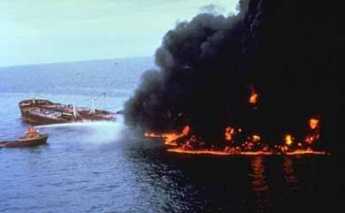
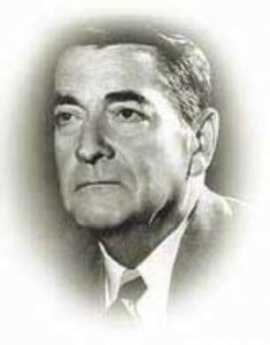
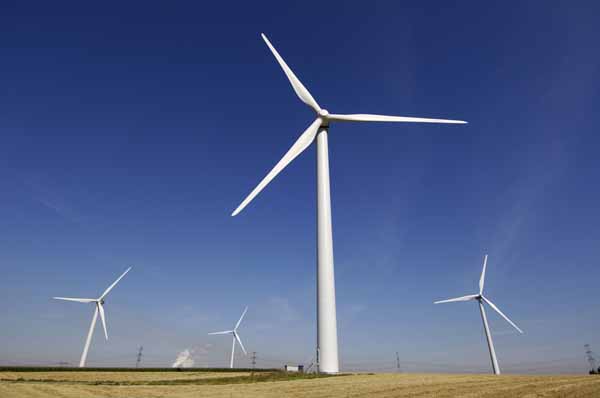

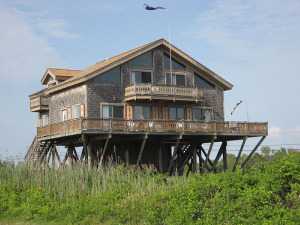
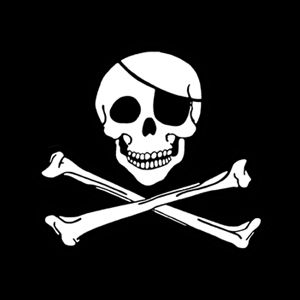





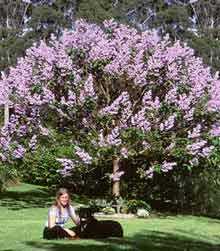

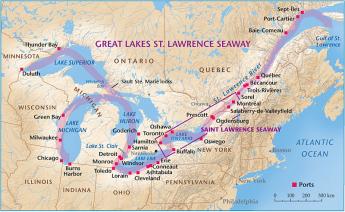
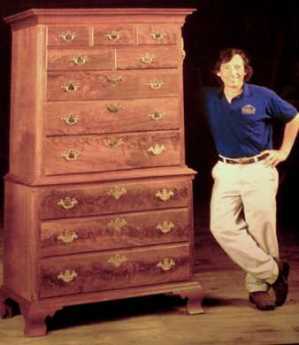
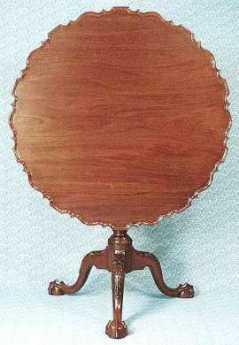

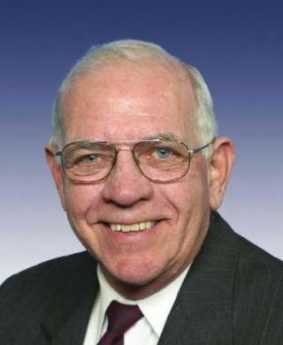
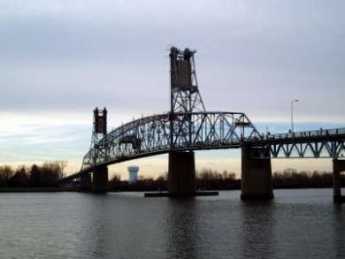
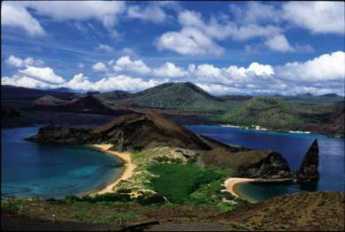
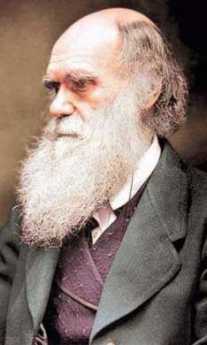
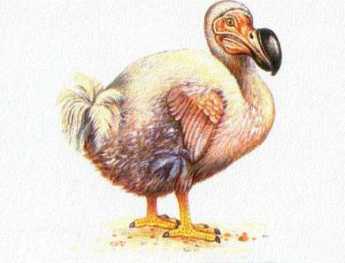
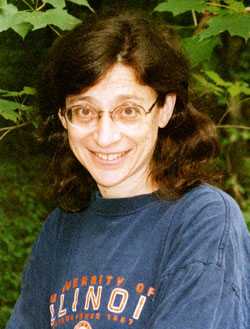


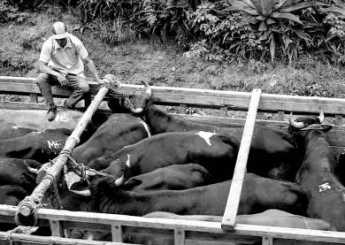
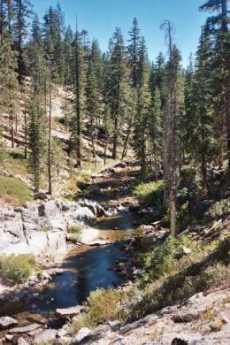
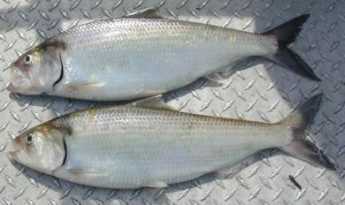
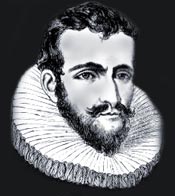
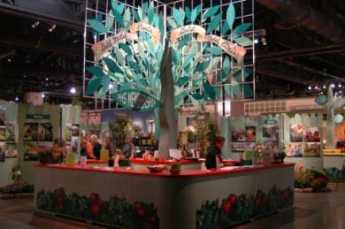

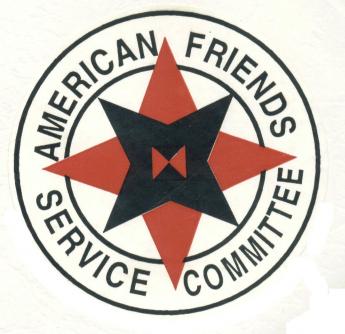
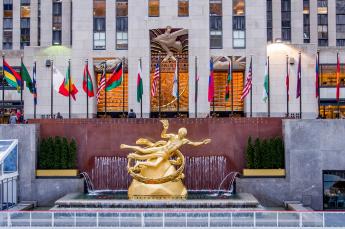
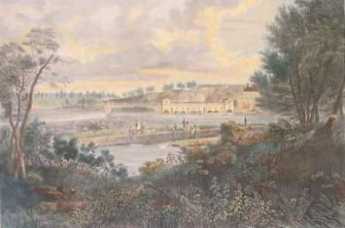
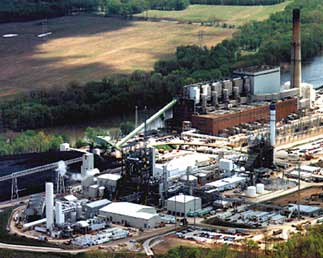
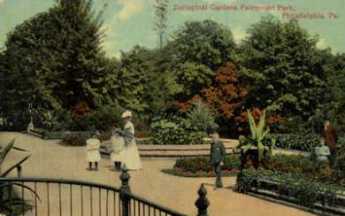
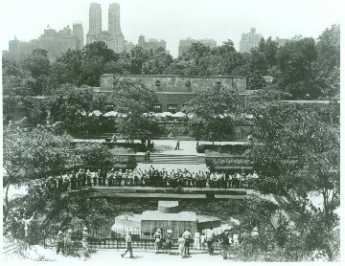
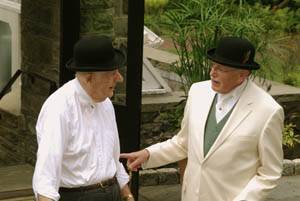
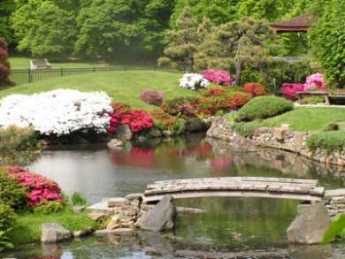
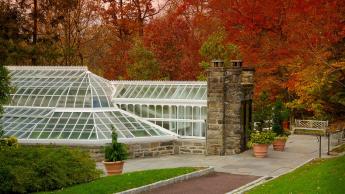
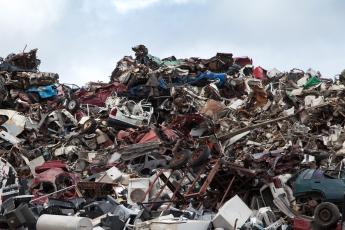
.jpg)
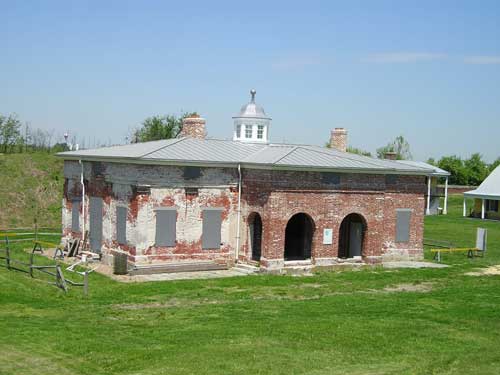
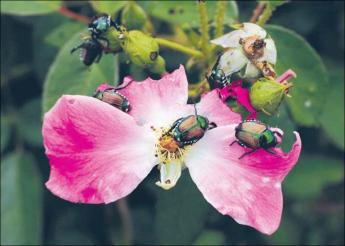

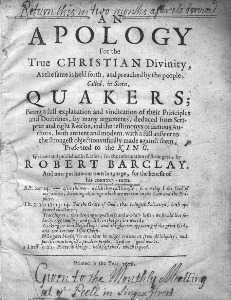
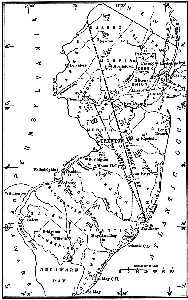

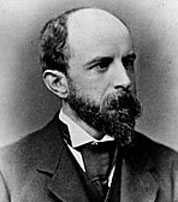
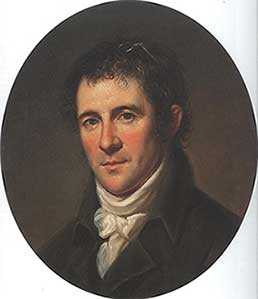
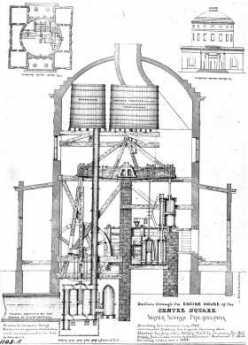

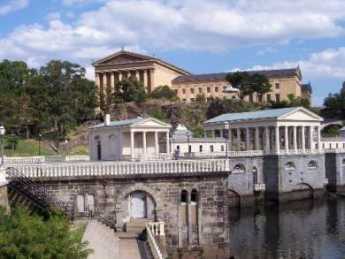
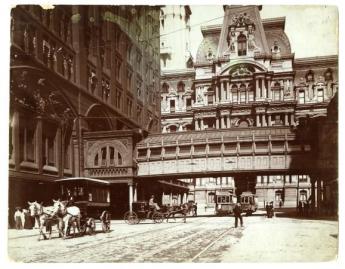
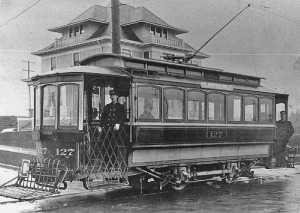
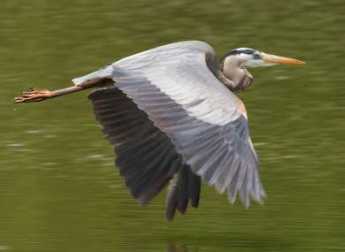
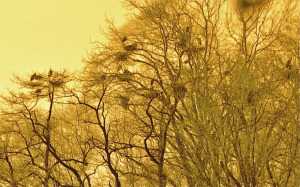
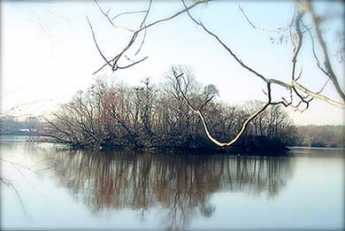
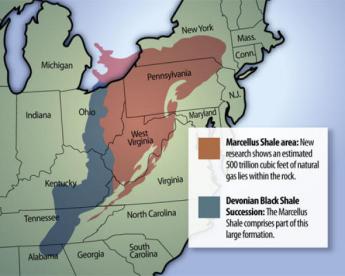

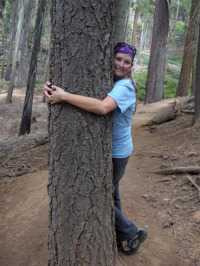
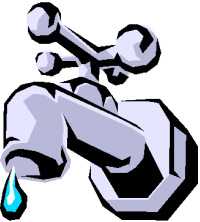
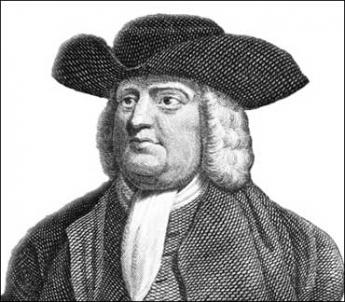
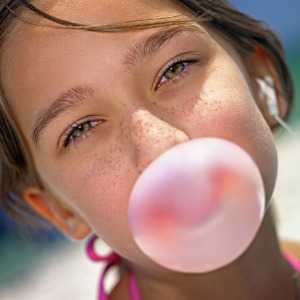
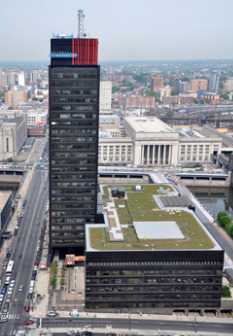



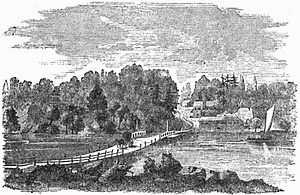

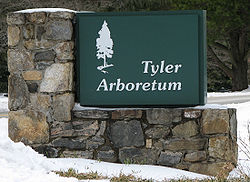

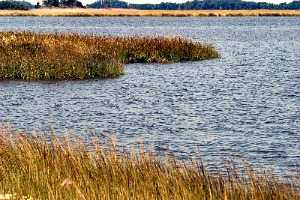
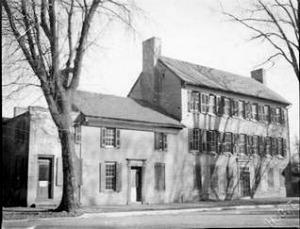
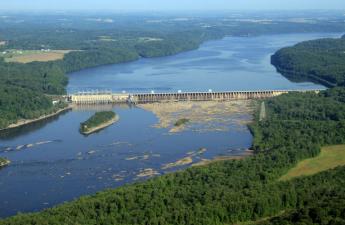
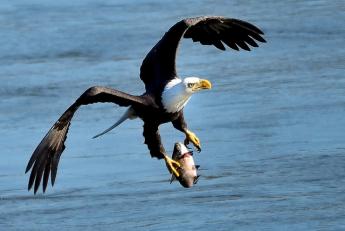
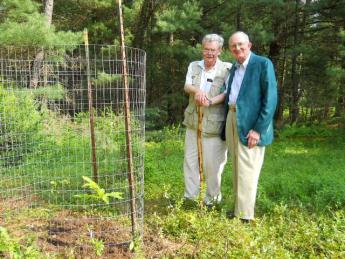
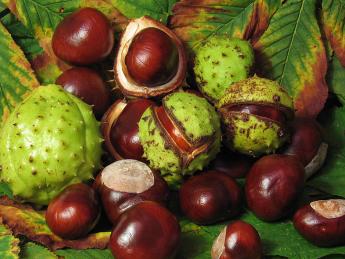
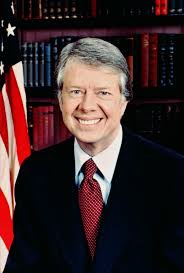

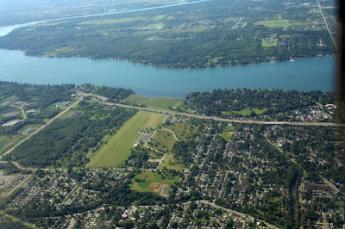



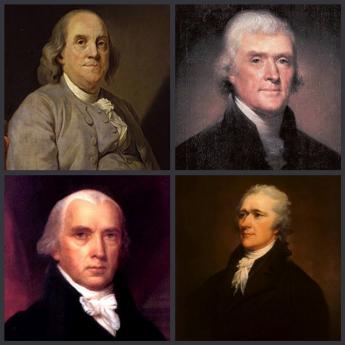
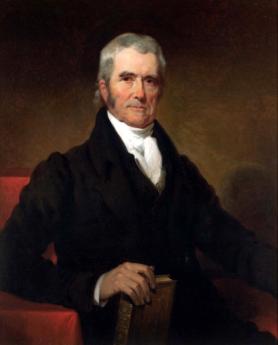
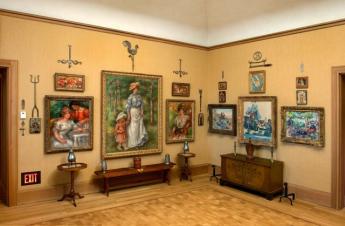


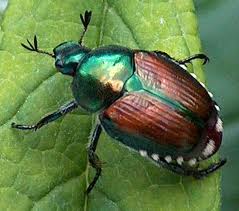
 At the furthermost corner of Fairmount Park, the former estate of John and Lydia Morris is run as a public arboretum, one of the two or three finest in North America.
At the furthermost corner of Fairmount Park, the former estate of John and Lydia Morris is run as a public arboretum, one of the two or three finest in North America.
 Charles Darwin spent very little time in the Galapagos Islands, but learned a lot. Tourists can do the same.
Charles Darwin spent very little time in the Galapagos Islands, but learned a lot. Tourists can do the same.
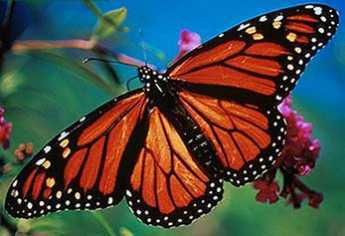 All of the Monarch butterflies in Eastern North America travel down to a Mexican mountain and spend the winter together in about six hundred acres.
All of the Monarch butterflies in Eastern North America travel down to a Mexican mountain and spend the winter together in about six hundred acres.
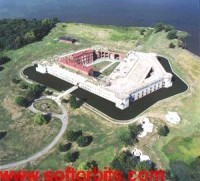 It's now a little hard to remember that the swamps began at what is now the Airport, and extended to what we now call Gray's Ferry. A lot of garbage got dumped there.
It's now a little hard to remember that the swamps began at what is now the Airport, and extended to what we now call Gray's Ferry. A lot of garbage got dumped there.
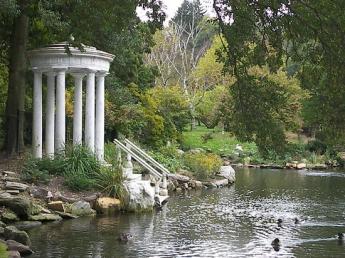 A new book has arrived, describing the 90 great public gardens of the Philadelphia regions, and discussing the best 40 of them in detail.
A new book has arrived, describing the 90 great public gardens of the Philadelphia regions, and discussing the best 40 of them in detail.
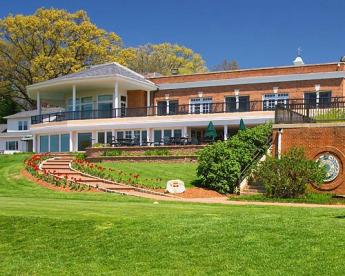 Haddonfield looks like a carefully manicured suburb but there is a surprising amount of wildlife if you know how to look for it.
Haddonfield looks like a carefully manicured suburb but there is a surprising amount of wildlife if you know how to look for it.
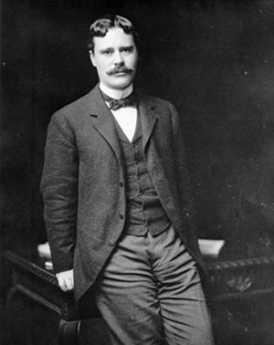 The Progressive movement of the early 20th century was a strange hodge-podge of political reformers, nostalgic aristocrats, would-be socialists, and anti-immigrant. The central figure was Theodore Roosevelt, traveling in strange company like Owen Wister, Robert M. LaFollette, Henry James, and Henry Adams. The Philadelphia link seems to have been through Harvard.
The Progressive movement of the early 20th century was a strange hodge-podge of political reformers, nostalgic aristocrats, would-be socialists, and anti-immigrant. The central figure was Theodore Roosevelt, traveling in strange company like Owen Wister, Robert M. LaFollette, Henry James, and Henry Adams. The Philadelphia link seems to have been through Harvard.